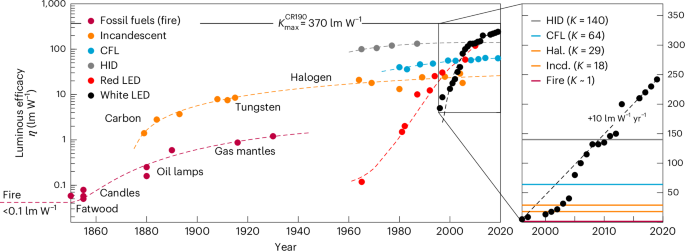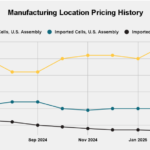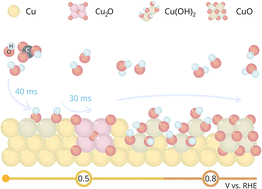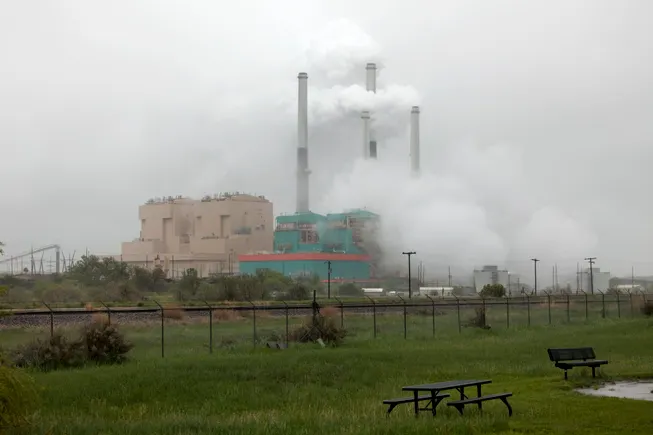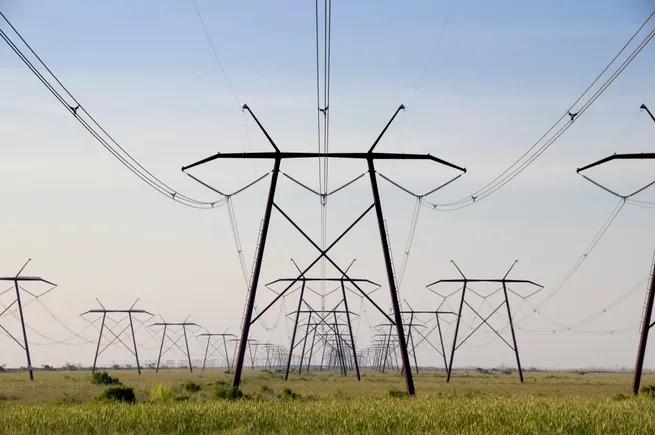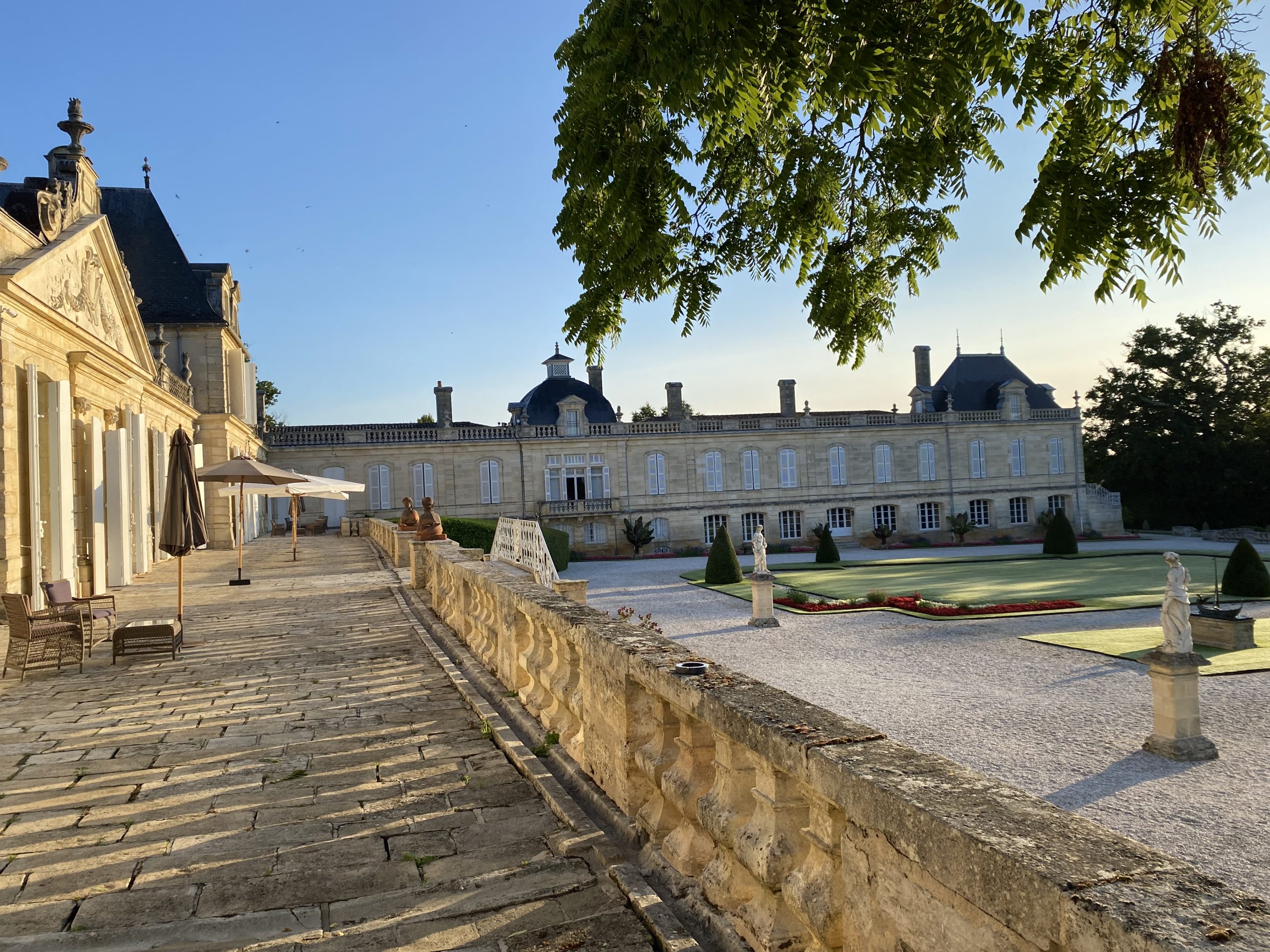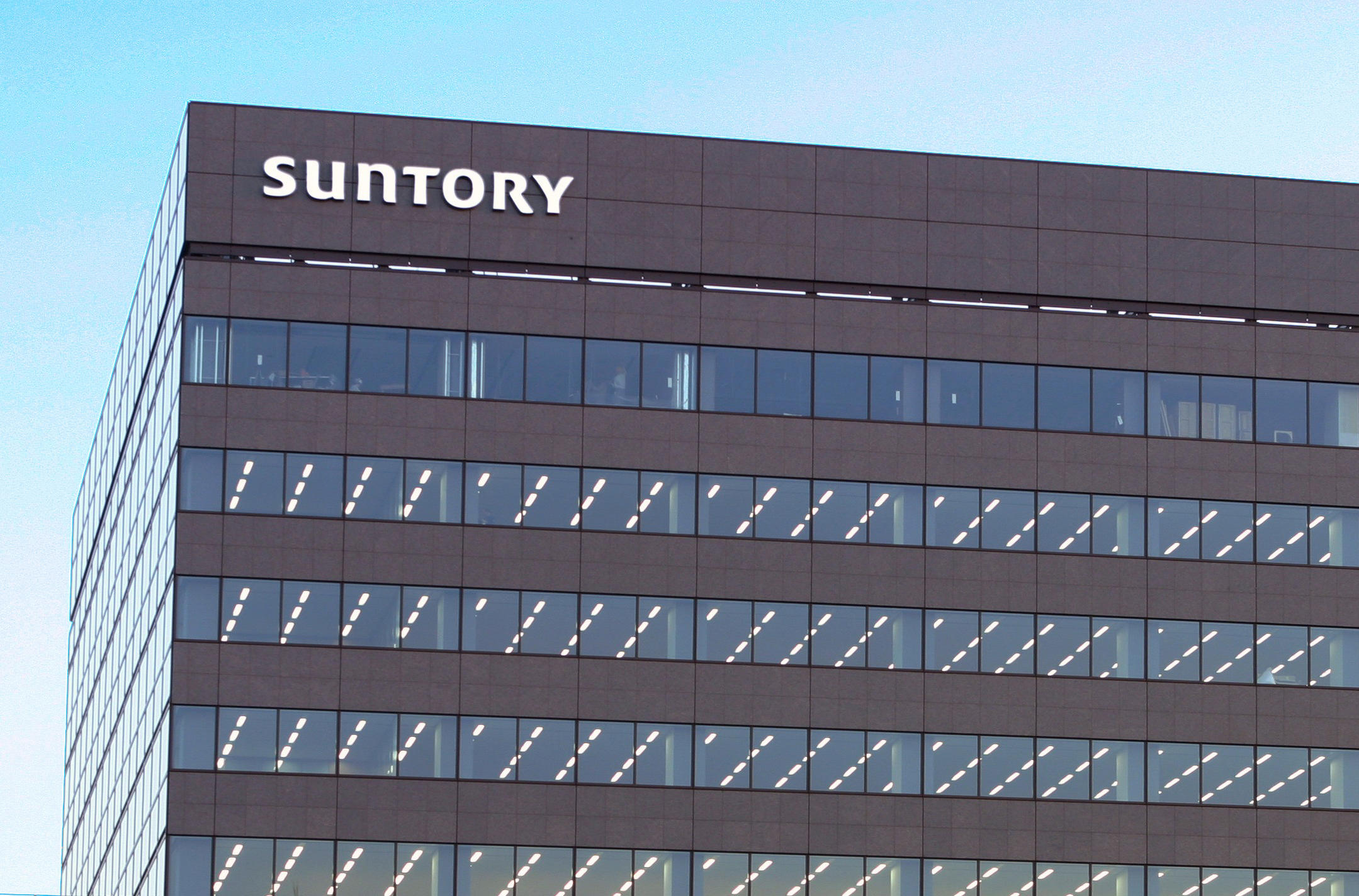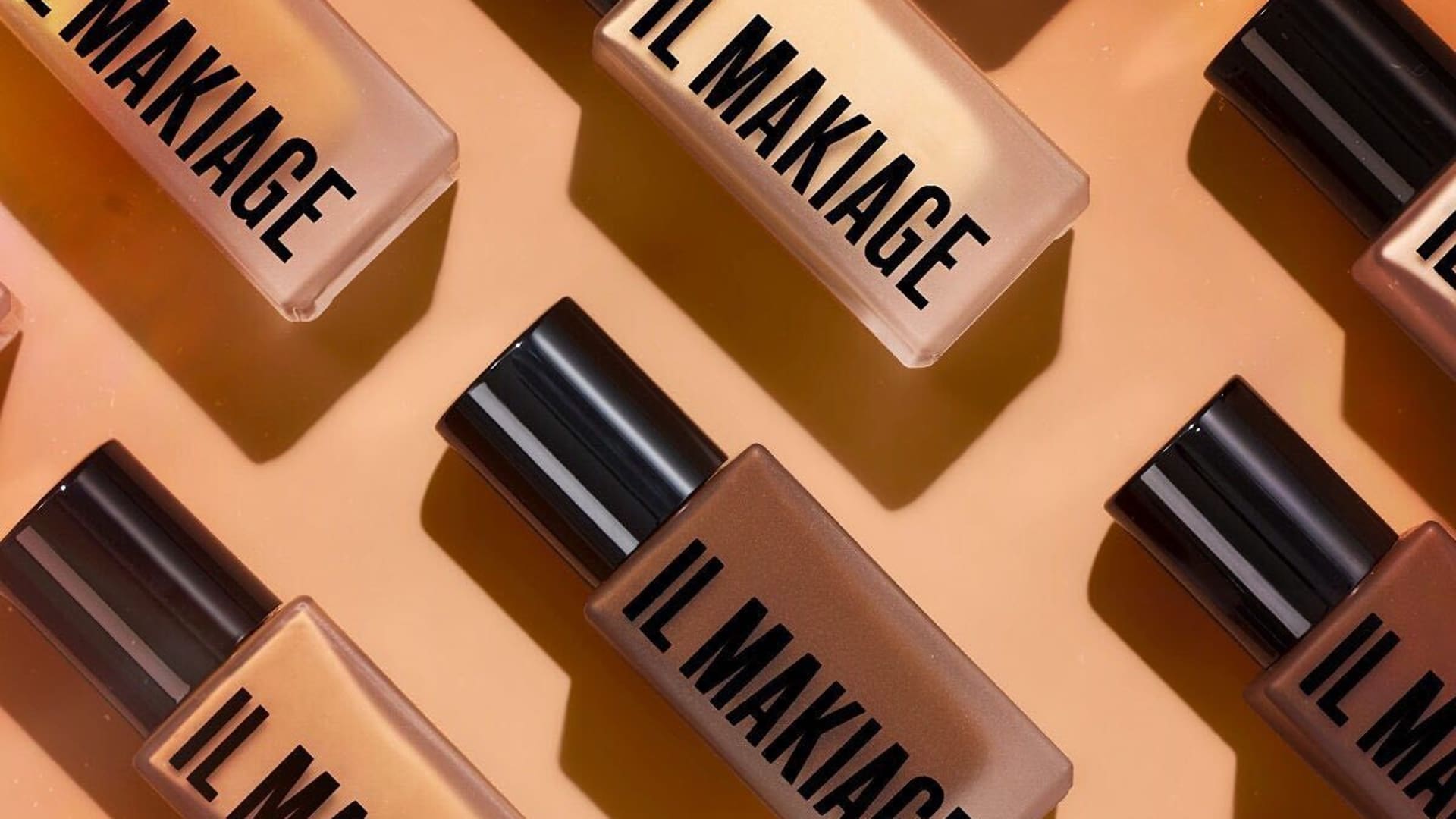If 2024 is a pyramid-shaped vintage in Bordeaux, then a lot of Margaux’s classed growths are placed towards the summit, writes db's Bordeaux correspondent Colin Hay (even if a fair few lower down the pyramid failed to make the grade for inclusion). Here are his tasting notes.
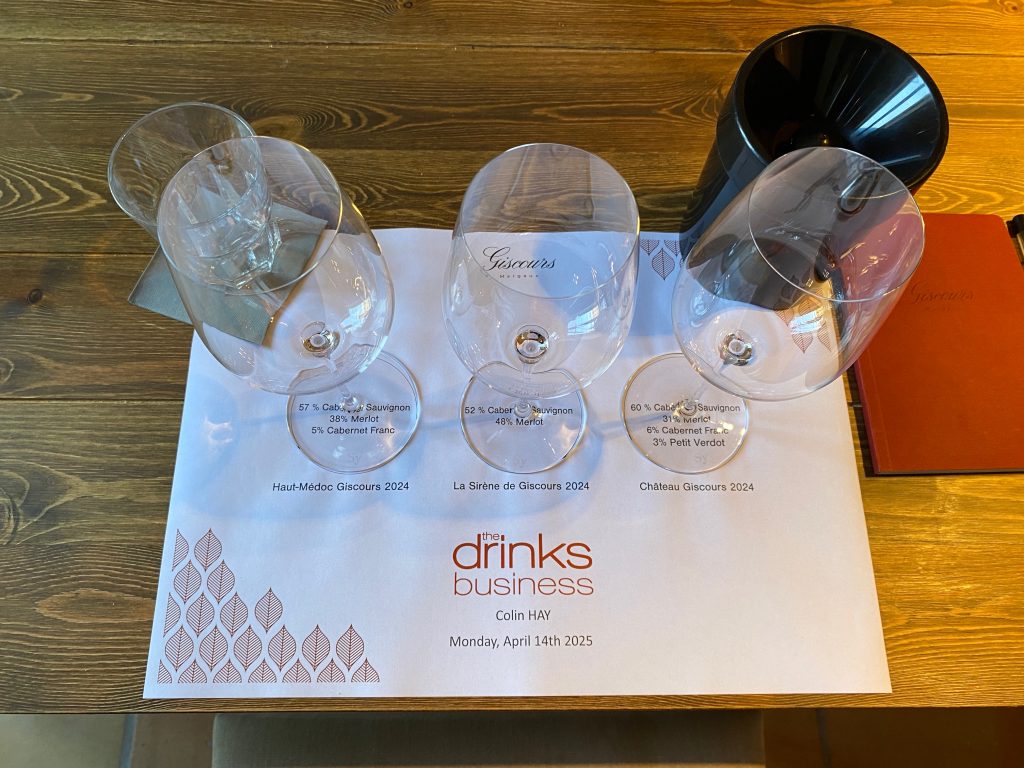 A note on the ratings
A note on the ratings
The tasting notes provide an indicative rating for each wine alongside the comments - I urge you look at the two together and, if anything, to privilege the comment over the rating, which aims is to describe the wine in the context of the vintage, the appellation and recent vintages of the same and similar wines, rather than to judge the wine per se. Naturally the ratings reflect my subjective evaluations and relative preferences between wines - and although your palate is likely to differ from mine, the comments should give enough information to be able to recalibrate my ratings and, in so doing, to align them more closely to your own taste.
2024 is far from a homogeneous vintage – and consequently the ratings span a considerable range (from close to the very top of the scale downwards). I see little interest, either for the consumer or the producer, in publishing very low scores. Consequently, I have decided not to publish scores or notes for classed growths (or equivalent wines) that I have rated below 90 (here the range 89-91) and for crus bourgeois (or equivalent wines) that I have rated below 88 (here the range 87-89). The list comprises around 40 wines tasted from the appellation.
Finally, élevage is likely to be very important in determining the final quality in bottle of these wines. I am no soothsayer and cannot predict how that will turn out (another reason for the use of banded ratings). But all en primeur ratings should be treated with caution and taken with a certain pinch of salt.
Detailed tasting notes
Alter Ego de Château Palmer (Margaux; 60% Cabernet Sauvignon; 34% Merlot; 6% Petit Verdot; a final yield of 22 hl/ha; mildew losses, coulure and millerandage, roughly 50:50 in terms of losses; pH 3.7; 65% pf the total production; 12 %
vin de presse; 13% alcohol; tasted with Thomas Duroux at the property). There’s lovely ripeness and a natural sweetness to this. Walnut and even a touch of frangipane. And great purity too to the cassis, damson and assorted dark plum fruits. Harmonious and joyous, with broad cashmere sheets rather than the more habitual silk of the vintage. Soft on the first half of the palate, more grainy towards the nicely sustained finish. There’s good density too. This maybe lacks some of the crystallinity of the 2023 but I like the menthol lift and the return to graphite on the finish.
91-93.
Château Angludet (Margaux; 59% Cabernet Sauvignon; 40% Merlot; 1% Cabernet Franc; a final yield of 29 hl/ha; 12.5% alcohol; tasted twice, first at the UGC press tasting at the
Cité du Vin). Quite earthy in its minerality which is very evident aromatically and which rather overpowers at first the subtle fresh floral notes. Red cherry and a mix of red and darker berry fruits. Sandalwood (something of a signature at this address). On the palate, this is soft and juicy with a nice forward thrust over the palate. It feels lithe and energetic, though it lacks a little complexity like many.
88-90.
Baron de Brane (Margaux; 50% Merlot; 50% Cabernet Sauvignon; pH 3.52; 15.5%
vin de presse; 12.8% alcohol; selected from Terrace 3 and Terrace 5 and so not really a second wine at all; just 20% of the total production in 2024; tasted at the property with Henri Lurton). Beautifully plush and intensely floral, with quite a charged, tight and taut mid-palate, not the greatest density nor the greatest amplitude but that archetypal Brane clarity and crystallinity. Layers of silk fluttering in the breeze bringing a sense of dynamism and energy. This has a pleasing natural sweetness, with a little more cherry in the mouth and a touch of graphite too. I find this very classically of the
appellation and a fabulous introduction to the quality of even the second-selection
terroirs of this incredible estate.
89-91.
Blason d’Issan (Margaux; 52% Cabernet Sauvignon ; 46% Merlot; 2% Petit Verdot; IPT 59; 12.9% alcohol; this will be bottled in June and released in September; tasted at the property with Augustin Lacaille). Aromatically very pure, with lovely floral notes. Blueberry and cassis. Black cherry. There’s a gracious plump, plush dark-fruitedness to this that is very enticing. Good ripeness and yet great sapidity and freshness too. Not the mid-palate delineation of the
grand vin, of course, but I find this impressive and distinctively d’Issan!
89-91.
Château Brane-Cantenac (Margaux; 77% Cabernet Sauvignon; 22% Merlot; 1% Cabernet Franc – all sourced from the
plateau of Brane on Terrace 4
terroirs; pH 3.53; 11.3% press wine; an impressive final yield of 46.6 hl/ha; 12.5% alcohol; around 40% of the total production after a very strict selection; tasted at the UGC press tasting at the
Cité du Vin and then at the property with Henri Lurton). The 100
th anniversary of the Lurton family’s acquisition of the property. Black cherries, plump blueberries, cassis, black berry, bramble, walnut oil and cedar, cedar, cedar (actually, it’s a little more subtle than that implies). Peonies and irises too. This is slow to open but gorgeously enticing as it does so (it’s actually a little less closed when re-tasted at the property). Plump, plush, lithe and extremely refined. Soft and succulent, that gentle Rpulse extraction allowing this to attain a density very rare in the vintage. The acidity is just a little raised, but this is a very fine achievement, with the wine even achieving a certain opulence. It doesn’t have quite the mid-palate delineation and sparkle of the 2020 or 2022 but it is excellent when set it any comparative context. Remarkably (and unmistakably) Brane!
92-94+.
Château Cantenac Brown (Margaux; 70% Cabernet Sauvignon; 27.5% Merlot; 1.5% Cabernet Franc; 1% Petit Verdot; a final yield of 32 hl/ha [the 37 hl/ha in the vineyard reduced on the sorting tables]; pH 3.72; 13.1% alcohol; the
grand vin represents 52% of the total production after very strict selection; tasted twice, first at the UGC press tasting at the
Cité du Vin). Closer and closer to its near neighbour in density, the softness and quality of its tannins and the succulence of the mid-palate, but a little fresher and more aerial and lifted in personality. It’s also characterised by a slightly different florality – more gladioli and wisteria, a little rose petal. The frame is a little narrower, but that accentuates the feeling of depth and gravitas. Very sapid on the finish. Lovely. Impressively substantial for the vintage and very finely judged.
92-94.
Le Chevalier de Lascombes (Margaux; 70% Merlot; 27% Cabernet Sauvignon; 3% Petit Verdot; 13% alcohol; this comes from what they now, rather disparagingly, call the ‘satellite’ plots of the estate; tasted with Axel Heinz). Lovely. Very Margellais. Fresh and pure, with a pulpy fresh berry fruit. There’s a gentle natural sweetness too and a touch of graphite. Subtle floral notes with a slightly bulby character to the florality that I rather like. Hyacinth. Peony. This opens nicely in the glass even if it’s a little introvert at first with the bright, crisp, fresh fruits generously enrobing a narrow spherical core. There’s a hint of the tartness of the vintage but it’s not discombobulating. Long and chewy on the finish. Pure. Focussed. Precise.
89-91.
Château Dauzac (Margaux; 77% Cabernet Sauvignon; 23% Merlot; 13% alcohol; tasted twice, first at the UGC press tasting at the
Cité du Vin). Floral too, at least at first, but these more subtle aromatic notes tend to become a little over-whelmed by the heavier earthy mineral tones. That said they return as one dials in on the aromatic florality. Dark and concentrated, cool and composed in the depths of the cylindrical mid-palate, this has a lovely mouthfeel but lacks complexity in comparison with, say, Brane or Cantenac Brown, the tannins just a touch drier on the finish too. But, that said, this is an ambitious wine well-attained and it’s very juicy on the finish.
91-93.
Château Desmirail (Margaux; 65% Cabernet Sauvignon; 15% Merlot; 10% Cabernet Franc; 10% Petit Verdot; 12.5% alcohol; tasted twice, first at the UGC press tasting at the
Cité du Vin). Less opulently floral than the excellent 2023, but still very much more archetypically ‘of Margaux’ than it used to be – with gladioli and gladioli bulb much in evidence, accompanying the cherry and cherry stone notes. Glossy, sapid and deliciously succulent in the mid-palate, this is ample and enticing and will be approachable early and drink young. It lacks a little density, but what we lose in girth we gain in limpidity and energy. For me, that’s the right way to manage the trade-off.
89-91.
Château Durfort-Vivens (Margaux; 94% Cabernet Sauvignon – only topped in 2021 as a proportion; 6% Merlot; a final yield of 37 hl/ha; certified organic and biodynamic; Eric Boissenot is the consultant; tasted with Gonzague Lurton). Richer and fuller, more ample and generous than Ferrière. Creamy too, with a lovely walnut oil and walnut shell note alongside the crunchy dark berry and damson fruit. There’s that signature black cherry note too. A gentle florality, less immediately expressive than in recent vintages, but it’s there and it will come through more and more with
élévage and bottle age – lily of the valley and peony predominantly, maybe a little wisteria too. A scratch of green peppercorn. And, with air more and more cedar and, with it, a touch of violet and finally those rose petals. In the mouth this is really impressive, with a sense of depth and profundity and, indeed, of layering that is present in this vintage only at the very top of the pyramid. Cool, very fine and dominated by that dark Cabernet fruit. The mouthfeel is exquisite, the tannins always present but in a gently pixilating way, picking out details from the sea of cashmere that forms the tactile mid-palate here. Fresh and lifted on the finish, with the tannins pinching and lifting the wine to a pleasing crescendo. A sprig of mint on the finish.
93-95.
Château Ferrière (Margaux; 70% Cabernet Sauvignon; 18% Petit Verdot; 10% Merlot; 2% Cabernet Franc; a final yield of 16 hl/ha, with significant mildew losses; pH 3.80; 12.2% alcohol; certified organic and biodynamic; Eric Boissenot is the consultant; tasted with Claire & Gonzague Lurton). Brighter, fresher, more lifted, more precise and more aerial than La Gurgue, but with the same sense of softness and creaminess – rare in the vintage – somehow evident even from the aromatic profile. A lovely very pure blackcurrant fruit, again with that signature Ferrière wild herbal and floral component that reinforces the impression of something natural (this is, of course, organic and biodynamic). There’s a touch of graphite and cedar too and, with aeration, a little damson. Sumptuously refined and both soft and delicate on the attack. But then the laser-sharp pure fruit cuts through the heart of the mid-palate. Very lively and energetic and very vivid in its fruit purity, this is great success (despite the small yields) in the vintage.
91-93.
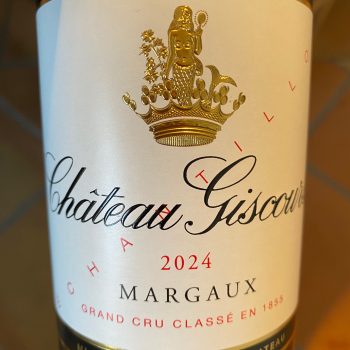 Château Giscours
Château Giscours (Margaux; 60% Cabernet Sauvignon; 31% Merlot; 6% Cabernet Franc; 3% Petit Verdot; a final yield of 35 hl/ha; 13% alcohol; tasted twice, first at the UGC press tasting at the
Cité du Vin and then re-tasted at the property with Jérôme Poisson). Picked in successive
tries – with the old vine Cabernet picked in some cases 10 days apart from the young Cabernet. Coiled and beautiful in its slightly wistful, dark berry and cherry aromatics. A touch of walnut oil. The florality is very delicate and there’s a hint of incense and candle smoke that I love here, again very delicate. Cool and beautifully composed with a pronounced spherical core densely packed with bright, vivid dark berry fruits. Crystalline in texture and nicely layered if lacking a little of the detail of the 2022 and 2023; but with all of the focussed precision of both. Very composed and beguiling.
93-95
Château La Gurgue (Margaux; 60% Cabernet Sauvignon; 25% Merlot; 15% Petit Verdot; a final yield of just 12 hl/ha; pH 3.74; 12.1% alcohol; certified organic and biodynamic; Eric Boissenot is the consultant; tasted with Claire & Gonzague Lurton). Dark chocolate and crushed raspberries, lemon thyme (signalling the acidity) and blood orange too; a little hint of sweet spice. Fresh, bright, crunchy in its fruit profile and with fine-grained tannins sufficient to take in charge the fruit and distribute it evenly over the palate. Quite linear as a consequence with a long, gently tapering finish. No harshness. The yields may be very low here but this has been very well managed in the chai.
89-91.
Château d’Issan (Margaux; 65% Cabernet Sauvignon; 30% Merlot; 2% Cabernet Franc; 2% Malbec; 1% Petit Verdot; a final yield of 39.8 hl/ha; aging in oak barrels, 50% of them new; pH 3.58; IPT 62; 12.9% alcohol; tasted at the property with Augustin Lacaille). Gracious in its florality. Peony, iris, the bulbs of both. Black cherry and cassis, a lovely Cabernet Sauvignon leafiness too. Blackcurrant leaf. Cedar. Walnut shell. This is tightly-wound and spherical at the core, increasing the sensation of intensity in the mouth. Violets with aeration. Taut, tense, chewy, a lovely svelte and fine-grained tannin. Impressive if not quite at the same level of purity as the 2020 or 2022. Exquisite nonetheless.
92-94+.
Château Kirwan (Margaux; 68% Cabernet Sauvignon; 18% Merlot; 8% Cabernet Franc; 5% Petit Verdot; 1% Carménère; a final yield of 27 hl/ha; 13% alcohol; tasted twice, first at the UGC press tasting at the
Cité du Vin). Graphite, a dark plummy fruit with a few more briary fruits thrown in to the mix – brambles and black berries. Fresh and juicy, an impression reinforced by the slightly elevated acidity. But the acidity is well-modulated and well-distributed over the palate. This is less ample than many of its peers and more linear as a consequence but it’s never strict. Quite vivid and vivacious. There’s a hint of cedar to come right on the finish.
91-93.
Château Labégorce (Margaux; a final yield of 32 hl/ha; 13% alcohol; tasted twice, first at the UGC press tasting at the
Cité du Vin). Cedar, peonies and black cherries, a little red cherry perhaps too and even a note of redcurrant and cranberry. This seems riper and richer aromatically than in the mouth, where the somewhat elevated acidity renders this more strict and taciturn than one imagines at first. But it’s still an impressive showing in a challenging vintage.
90-92.
Château Lascombes (Margaux; 65% Cabernet Sauvignon; 30% Merlot; 5% Cabernet Franc & Petit Verdot combined; a final yield of 38 hl/ha; sourced from the ‘historic’
terroirs of the estate; 13% alcohol; tasted three times, the first with Axel Heinz). A lovely vibrant purple rim. Glossy and charming. Immediately and effusively floral. But nuttier when re-tasted at the UGC, with more cracked black pepper notes too. This is an entirely different wine to the one we are familiar with from Lascombes. Lilac, lily, a hint of violet and white rose. Very pretty aromatically. A pointillist’s version of the still life vase of freshly cut flowers. Precise and eloquent in its detail. Very natural. Very focussed. In the mouth this is lifted and elegant, very much at the top of the palate but there is considerable depth and concentration too – it’s just disguised. Sapid and juicy, long and fresh. I love the cedar that comes through in the mid-palate above all with aeration. Crystalline and pure, and highly refined this is very true to the style being crafted since 2023. The new Lascombes identity is already very clear.
93-95. [I also tasted Lascombes’ new cuvée
La Côte de Lascombes (Margaux; 100% Merlot from almost 5 hectares on clay over limestone). This will not be released
en primeur. Since the first vintage to be released is the 2022 in September I will respect the preferences of the property and hold back my tasting note for now. But, without giving too much away, it’s exceptional!].
Château Malescot Saint-Exupéry (Margaux; 46% Cabernet Sauvignon; 41% Merlot; 13% Petit Verdot; a final yield of 20 hl/ha; 13% alcohol; tasted twice, first at the UGC press tasting at the
Cité du Vin). Lovely very classical Margellais aromatics – walnut, salted macademia nuts, black cherries, plump dark fruits of the forest and a suggestion of cedar. A subtle florality too. Sumptuous and impressively deep, dark and velvety on the palate, this is a considerable success. The acidity does tend to gather towards the finish and the effect is that this loses some of the opulence of the nose and the succulence of the mid-palate, but that’s well compensated for by the juiciness of the finish. Nicely done. Not exactly sleek, but very stylish and suave.
92-94.
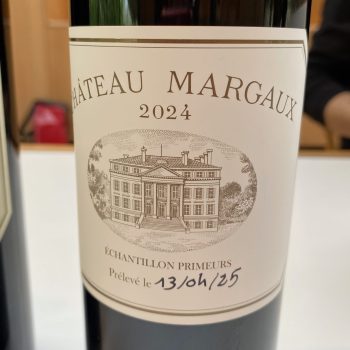 Château Margaux
Château Margaux (Margaux; 93% Cabernet Sauvignon; 5% Merlot; 1% Cabernet Franc; 1% Petit Verdot; impressively, the
grand vin represents 46% of the production, rather than the more usual 40% due to the higher yielding Cabernet Sauvignon; a final yield of 30 hl/ha due to the aggressiveness of the mildew, especially for the Merlot on clay soils, with the Cabernet Sauvignon on gravel much less impacted; the early-harvesting parcels were excellent and fully ripe, the rest proved more difficult; there were no problem here with
floraison; a final yield of 30 hl/ha due to mildew losses predominantly suffered in Merlot parcels; IPT 64; 12.8% alcohol; 13% vin de press [comparatively low]; tasted at the property with Philippe Bascaules and Sébastien Vergne). We are in the realm of Cabernet Sauvignon here and I find this gloriously expressive and expansive in its Cabernet purity. White and red currant. A little touch of mulberry. Bramble. Blackberry. A hint of black cherry skin – if perhaps more textural than aromatic. This is, for now, a little less floral than it has been
en primeur in recent vintages. Graphite and a touch of scratched new leather. Walnut oil. A peppery virgin olive oil note. In the mouth, this is super-gracious on the cool, soft, almost voluptuous attack (entry is a better – a softer – word). Layered, like Pavillon rouge, with much more vertical than horizontal range. Not the pixilated purity and delineation of some recent vintages. I believe them entirely when they tell me that this is better with the press wine and that the press wine is very fine but it does not yet feel fully integrated into the core of the mid-palate. But what I love is the cool, dark sensuous quality that is both so very beguiling and so essentially ‘Margaux’. The fruit profile on the finish is a little more red in hue – loganberry replacing the black berry fruits. Very fresh and lively, cool and precise and texturally enticing.
93-95.
Château Marquis d’Alesme Becker (Margaux; 30% Merlot; 60% Cabernet Sauvignon; 5% Petit Verdot; 5% Cabernet Franc; a final yield of 32 hl/ha; 13% alcohol; tasted twice, first at the UGC press tasting at the
Cité du Vin). Intensely floral and ‘bulb’-y in that florality once again (it’s a characteristic of the vintage) – peony blooms and their bulbs (carried home from the market and unwrapped!), blueberries and cherries, a little damson too. This has quite an intimate feel in the mouth, a sensation that comes from the narrow frame and the cool spherical core. Subtle, delicate, not terribly demonstrative by finely textured. The only issue is the somewhat dry character of the tannins on the finish.
90-92+.
Château Marquis de Terme (Margaux; 60% Cabernet Sauvignon; 38% Merlot; 2% Petit Verdot; a final yield of 38 hl/ha; 13% alcohol; tasted twice, the second time at the UGC press tasting). A wine that, in a way, is almost flattered by the vintage – which seems like an odd thing to say. That said, I can't help but feel as though the extraction has been pushed just a touch further than would have been my preference in the search for more volume in the mouth. That, for me, comes at the expense of delineation and detail, rendering the fruit a little less precise. Tasted a second time, I find more clarity and precision on the attack and the front of the palate, but it still loses a little of its shape in the mouth towards the finish. But the floral aromatics are enticing and even if the wood will take a little longer to be fully integrated it reinforces that florality and with it the Margaux typicity of this wine.
90-92.
Château Monbrison (Margaux; 70% Cabernet Sauvignon; 25% Merlot; 5% Petit Verdot; 13% alcohol; tasted twice, the second time at the UGC press tasting at the
Cité du Vin). Impressive with quite an intense, again slightly bulby florality (not the blooms but the prospect of the blooms!). A touch of graphite, a scratch of pencil shaving and a hint of the cedar to come. This doesn’t have quite the delineation and definition on the mid-palate as the stars of the
appellation but it’s succulent and juicy and very much an expression of its Margaux
terroir and typicity.
90-92+.
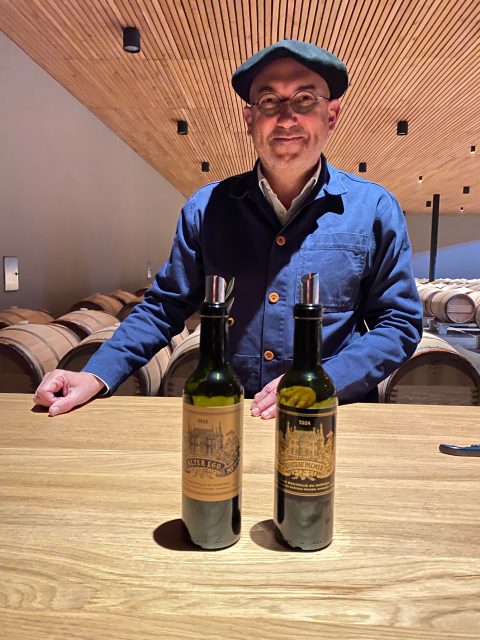 Château Palmer
Château Palmer (Margaux; 59% Cabernet Sauvignon; 41% Merlot; a final yield of 22hl/ha; pH 3.7; IPT 70; 11%
vin de presse; 13.2% alcohol; tasted with Thomas Duroux at the property). Ethereal and magisterial in its poise and elegance, this is also very classical. Fruits of the forest. Mulberry. A touch of the signature black cherry and black cherry skin, even a hint of black forest
gateau. A touch of iris, some violet with aeration. Walnut oil. Kalamata olive tapenade. Cassis. This is much more crystalline than Alter Ego in this vintage and gloriously sapid when the tannins start to grip in the mid-palate. This is so clear, limpid and lithe and the tannins are tactile and beady but always ultra-fine grained. In short, a great success in the context of any vintage.
94-96.
Château Paveil de Luze (Margaux;
cru bourgeois exceptionnel; 100% Cabernet Sauvignon; a final yield of 53 hl/ha; 13% alcohol; Stephane Derenoncourt & Simon Blanchard are the consultants here). Impressive at this level. Plush, succulent and quite velvety in its texture with a lovely deep cassis and blackcurrant aromatic profile conveyed to the palate. Black cherry and damson too. Sapid on the finish, the tannins just hinting as dryness, but this is still a colossal achievement in a tricky vintage.
89-91.
Pavillon Rouge Château Margaux (Margaux; 77% Cabernet Sauvignon; 11% Merlot; 9% Cabernet Franc; 3% Petit Verdot; a final yield of 30 hl/ha; 28% of the crop; IPT 65; elevated temperature at the end of the fermentation to up the tannin extraction with longer maceration too; a little chaptalisation; 12.9% alcohol; 12.5% press wine). Lovely Cabernet Sauvignon cassis and black currant fruits. A little mulberry. A touch of blueberry perhaps from the Cabernet Franc that is very present here. Gracious. Quite lifted, this is a wine with more vertical than horizontal range. A touch of iris bulb. A hint of walnut shell imparting a gentle nutty creaminess. Not massive and the acidity is quite elevated. Lovely, soft, fine-grained yet structuring tannins. Sapid and juicy to the core. Beautiful but in quite a linear, almost slightly strict, style. Energetic and vibrant with the grip of the tannings bringing lift to the finish.
91-93+.
Château Prieuré-Lichine (Margaux; 65% Cabernet Sauvignon; 29% Merlot; 6% Petit Verdot; a final yield of 22 hl/ha in the vineyard and just 20 hl/ha for the grand vin after densimetric sorting with a lot less Merlot in the final blend as a consequence; aging in oak barrels, 35% new; 13% alcohol; tasted twice, first at the UGC press tasting). An intriguing wine that has me rather in two minds. I love the initially shy but increasingly expressive Cabernet-dominated aromatics that seem to suit very well the identity of Prieuré-Lichine; and I love, too, the delicate violet and rose petal florality here. And there’s a hint too of the graphite that will come through more with
élévage and bottle aging. This is creamy, too, on the attack and the tannins have been beautifully managed. But in the mid-palate I find this both a little lean and, perhaps more significantly, lacking in complexity – it seems to lose the identity established aromatically. It’s almost a little dilute. That said, you can only work with what you harvest and I suspect the choices made here are the right ones. Early drinking and highly accessible, it will be interesting to see whether it grows in volume a little during its (presumably quite short) élévage.
90-92+.
Château Rauzan-Gassies (Margaux; 73% Cabernet Sauvignon; 27% Merlot; 13% alcohol; tasted twice, first at the UGC press tasting at the
Cité du Vin). Never a wine flattered by being tasted at this stage, but here I find it rather more Margellais than is often the case
en primeur. A subtle floral note and dark plummy and damson fruit – some cassis with aeration (and all rather pretty if very subtle). But on the palate it’s so soft and gentle that it seems not to express much and feels also just a little dilute. The finish is actually more interesting – returning to and developing the floral theme and with some of the cassis coming through – so I’ll be interested to revisit this in bottle. Difficult to assess, but this might turn out to be a conservative rating.
89-91.
Château Rauzan-Ségla (Margaux; 63.5% Cabernet Sauvignon; 34% Merlot; 2% Petit Verdot; 0.5% Cabernet Franc; a final yield of 29 hl/ha; 13% alcohol; tasted twice, first at the UGC press tasting at the
Cité du Vin). This is very beautifully balanced and very beautifully composed. Subtle floral notes (violet and rose petal), lovely ripe cassis and blackcurrant and bramble fruits, that typical Rauzan-Ségla walnut and graphite note and just the suggestion of the cedar that will eventually enrobe all of this so elegantly – a little more when re-tasted a week later at Canon. Blood orange. Sapid, limpid and quite sinuous for Rauzan-Ségla this is very classy and it transcends the vintage. This expresses the
terroir so well. So incredibly harmonious.
93-95.
Ségla (Margaux; not released
en primeur and distributed solely by Ulysse Cazabonne). Quite saline. Full, rich, pure and nicely focussed. The fruit is distributed over quite a broad frame. Glossy, crystalline, dark-fruited to the core and gracious in its sapidity. A lovely bucket full of cedar in the mid-palate generously enrobing the dark berry fruits. Excellent value and highly recommended. Sapid on the finish. An excellent introduction to the
grand vin that is (not for the first, nor probably the last time) better than many first wines of the classed growths in the vintage.
90-92+.
Château Siran (Margaux; 56% Cabernet Sauvignon; 36% Merlot; 8% Petit Verdot; a final yield of 45.5 hl/ha; 13.5% alcohol; tasted twice, first at the UGC press tasting). This treads the tight-rope wire and threads the needle of the vintage well. It’s dark berry-fruited, with a little purple plum and damson, it has that Margaux florality and a wild heathery moorland note too that I have often found in recent vintages of Siran (as well as in some very old ones). The Cabernet signature is especially attractive and this remains pure, precise and limpid all the way to quite a distant vanishing point. Not the poise or outright elegance or charm of, say, 2020, but this is an excellent result from a very consistent address.
91-93.
Château du Tertre (Margaux; 75% Cabernet Sauvignon; 13% Merlot; 10% Cabernet Franc; 2% Petit Verdot; a final yield of 40 hl/ha; 13% alcohol; tasted twice, first at the UGC press tasting at the
Cité du Vin). Lush and plush in its gracious, slightly delicate and subtle florality with a very dark berry and cherry fruit – the marriage of the two so attractive. A gorgeously refined and very fluid wine, with great appellation character and the product of the gentlest of extractions, this is a wine of elegance and finesse. One of the best results from here in recent vintages. Exquisite. I simply love the floral-enrobed cedar on the finish.
92-94.
For full appellation-by-appellation reviews, see here:
St-Estèphe, Paulliac,
Saint-Julien,
Margaux, Haut-Medoc and left-bank satellite appellations, Pomerol, Saint-Emilion
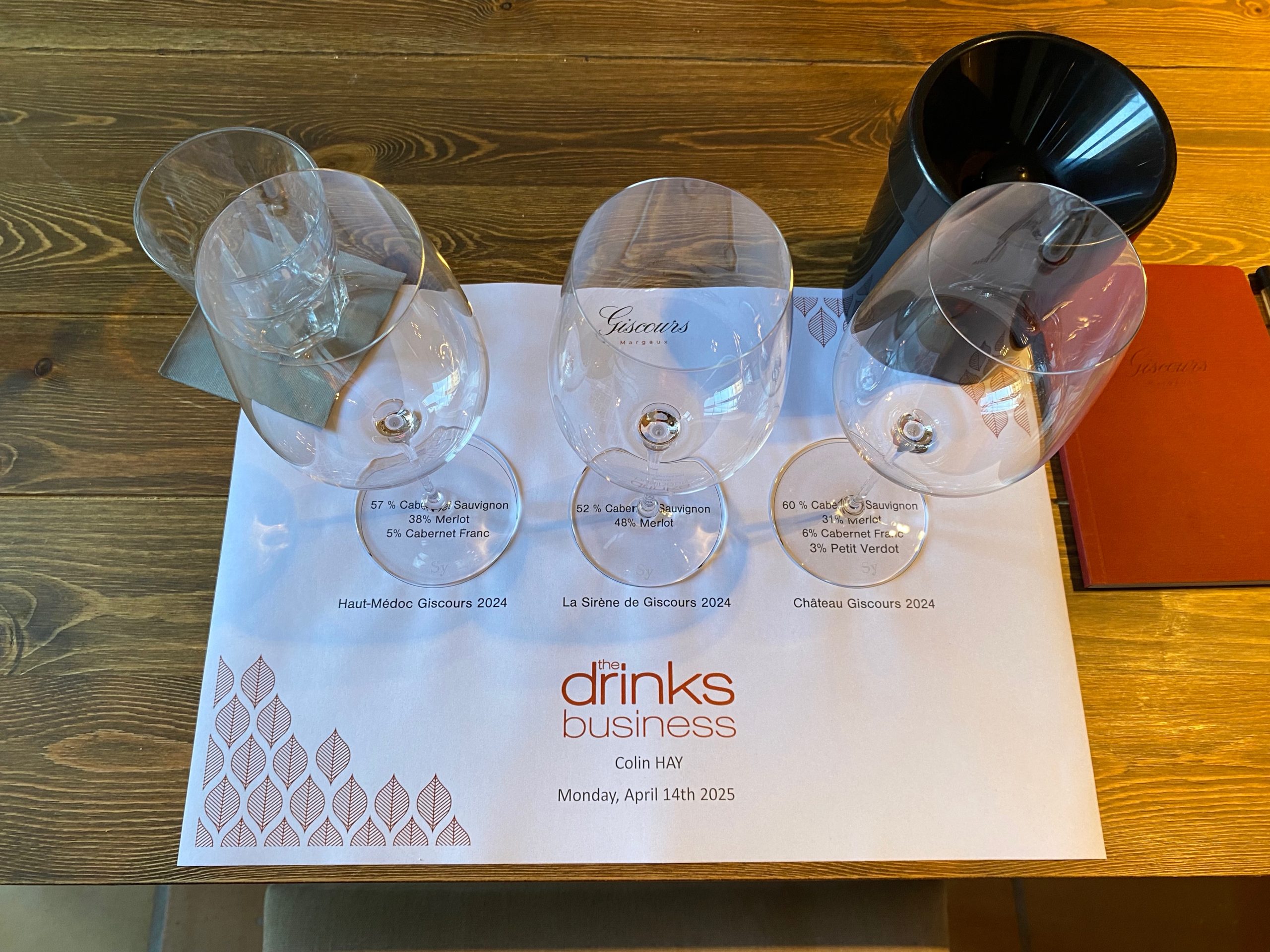
 A note on the ratings
The tasting notes provide an indicative rating for each wine alongside the comments - I urge you look at the two together and, if anything, to privilege the comment over the rating, which aims is to describe the wine in the context of the vintage, the appellation and recent vintages of the same and similar wines, rather than to judge the wine per se. Naturally the ratings reflect my subjective evaluations and relative preferences between wines - and although your palate is likely to differ from mine, the comments should give enough information to be able to recalibrate my ratings and, in so doing, to align them more closely to your own taste.
2024 is far from a homogeneous vintage – and consequently the ratings span a considerable range (from close to the very top of the scale downwards). I see little interest, either for the consumer or the producer, in publishing very low scores. Consequently, I have decided not to publish scores or notes for classed growths (or equivalent wines) that I have rated below 90 (here the range 89-91) and for crus bourgeois (or equivalent wines) that I have rated below 88 (here the range 87-89). The list comprises around 40 wines tasted from the appellation.
Finally, élevage is likely to be very important in determining the final quality in bottle of these wines. I am no soothsayer and cannot predict how that will turn out (another reason for the use of banded ratings). But all en primeur ratings should be treated with caution and taken with a certain pinch of salt.
A note on the ratings
The tasting notes provide an indicative rating for each wine alongside the comments - I urge you look at the two together and, if anything, to privilege the comment over the rating, which aims is to describe the wine in the context of the vintage, the appellation and recent vintages of the same and similar wines, rather than to judge the wine per se. Naturally the ratings reflect my subjective evaluations and relative preferences between wines - and although your palate is likely to differ from mine, the comments should give enough information to be able to recalibrate my ratings and, in so doing, to align them more closely to your own taste.
2024 is far from a homogeneous vintage – and consequently the ratings span a considerable range (from close to the very top of the scale downwards). I see little interest, either for the consumer or the producer, in publishing very low scores. Consequently, I have decided not to publish scores or notes for classed growths (or equivalent wines) that I have rated below 90 (here the range 89-91) and for crus bourgeois (or equivalent wines) that I have rated below 88 (here the range 87-89). The list comprises around 40 wines tasted from the appellation.
Finally, élevage is likely to be very important in determining the final quality in bottle of these wines. I am no soothsayer and cannot predict how that will turn out (another reason for the use of banded ratings). But all en primeur ratings should be treated with caution and taken with a certain pinch of salt.
 Château Giscours (Margaux; 60% Cabernet Sauvignon; 31% Merlot; 6% Cabernet Franc; 3% Petit Verdot; a final yield of 35 hl/ha; 13% alcohol; tasted twice, first at the UGC press tasting at the Cité du Vin and then re-tasted at the property with Jérôme Poisson). Picked in successive tries – with the old vine Cabernet picked in some cases 10 days apart from the young Cabernet. Coiled and beautiful in its slightly wistful, dark berry and cherry aromatics. A touch of walnut oil. The florality is very delicate and there’s a hint of incense and candle smoke that I love here, again very delicate. Cool and beautifully composed with a pronounced spherical core densely packed with bright, vivid dark berry fruits. Crystalline in texture and nicely layered if lacking a little of the detail of the 2022 and 2023; but with all of the focussed precision of both. Very composed and beguiling. 93-95
Château La Gurgue (Margaux; 60% Cabernet Sauvignon; 25% Merlot; 15% Petit Verdot; a final yield of just 12 hl/ha; pH 3.74; 12.1% alcohol; certified organic and biodynamic; Eric Boissenot is the consultant; tasted with Claire & Gonzague Lurton). Dark chocolate and crushed raspberries, lemon thyme (signalling the acidity) and blood orange too; a little hint of sweet spice. Fresh, bright, crunchy in its fruit profile and with fine-grained tannins sufficient to take in charge the fruit and distribute it evenly over the palate. Quite linear as a consequence with a long, gently tapering finish. No harshness. The yields may be very low here but this has been very well managed in the chai. 89-91.
Château d’Issan (Margaux; 65% Cabernet Sauvignon; 30% Merlot; 2% Cabernet Franc; 2% Malbec; 1% Petit Verdot; a final yield of 39.8 hl/ha; aging in oak barrels, 50% of them new; pH 3.58; IPT 62; 12.9% alcohol; tasted at the property with Augustin Lacaille). Gracious in its florality. Peony, iris, the bulbs of both. Black cherry and cassis, a lovely Cabernet Sauvignon leafiness too. Blackcurrant leaf. Cedar. Walnut shell. This is tightly-wound and spherical at the core, increasing the sensation of intensity in the mouth. Violets with aeration. Taut, tense, chewy, a lovely svelte and fine-grained tannin. Impressive if not quite at the same level of purity as the 2020 or 2022. Exquisite nonetheless. 92-94+.
Château Kirwan (Margaux; 68% Cabernet Sauvignon; 18% Merlot; 8% Cabernet Franc; 5% Petit Verdot; 1% Carménère; a final yield of 27 hl/ha; 13% alcohol; tasted twice, first at the UGC press tasting at the Cité du Vin). Graphite, a dark plummy fruit with a few more briary fruits thrown in to the mix – brambles and black berries. Fresh and juicy, an impression reinforced by the slightly elevated acidity. But the acidity is well-modulated and well-distributed over the palate. This is less ample than many of its peers and more linear as a consequence but it’s never strict. Quite vivid and vivacious. There’s a hint of cedar to come right on the finish. 91-93.
Château Labégorce (Margaux; a final yield of 32 hl/ha; 13% alcohol; tasted twice, first at the UGC press tasting at the Cité du Vin). Cedar, peonies and black cherries, a little red cherry perhaps too and even a note of redcurrant and cranberry. This seems riper and richer aromatically than in the mouth, where the somewhat elevated acidity renders this more strict and taciturn than one imagines at first. But it’s still an impressive showing in a challenging vintage. 90-92.
Château Lascombes (Margaux; 65% Cabernet Sauvignon; 30% Merlot; 5% Cabernet Franc & Petit Verdot combined; a final yield of 38 hl/ha; sourced from the ‘historic’ terroirs of the estate; 13% alcohol; tasted three times, the first with Axel Heinz). A lovely vibrant purple rim. Glossy and charming. Immediately and effusively floral. But nuttier when re-tasted at the UGC, with more cracked black pepper notes too. This is an entirely different wine to the one we are familiar with from Lascombes. Lilac, lily, a hint of violet and white rose. Very pretty aromatically. A pointillist’s version of the still life vase of freshly cut flowers. Precise and eloquent in its detail. Very natural. Very focussed. In the mouth this is lifted and elegant, very much at the top of the palate but there is considerable depth and concentration too – it’s just disguised. Sapid and juicy, long and fresh. I love the cedar that comes through in the mid-palate above all with aeration. Crystalline and pure, and highly refined this is very true to the style being crafted since 2023. The new Lascombes identity is already very clear. 93-95. [I also tasted Lascombes’ new cuvée La Côte de Lascombes (Margaux; 100% Merlot from almost 5 hectares on clay over limestone). This will not be released en primeur. Since the first vintage to be released is the 2022 in September I will respect the preferences of the property and hold back my tasting note for now. But, without giving too much away, it’s exceptional!].
Château Malescot Saint-Exupéry (Margaux; 46% Cabernet Sauvignon; 41% Merlot; 13% Petit Verdot; a final yield of 20 hl/ha; 13% alcohol; tasted twice, first at the UGC press tasting at the Cité du Vin). Lovely very classical Margellais aromatics – walnut, salted macademia nuts, black cherries, plump dark fruits of the forest and a suggestion of cedar. A subtle florality too. Sumptuous and impressively deep, dark and velvety on the palate, this is a considerable success. The acidity does tend to gather towards the finish and the effect is that this loses some of the opulence of the nose and the succulence of the mid-palate, but that’s well compensated for by the juiciness of the finish. Nicely done. Not exactly sleek, but very stylish and suave. 92-94.
Château Giscours (Margaux; 60% Cabernet Sauvignon; 31% Merlot; 6% Cabernet Franc; 3% Petit Verdot; a final yield of 35 hl/ha; 13% alcohol; tasted twice, first at the UGC press tasting at the Cité du Vin and then re-tasted at the property with Jérôme Poisson). Picked in successive tries – with the old vine Cabernet picked in some cases 10 days apart from the young Cabernet. Coiled and beautiful in its slightly wistful, dark berry and cherry aromatics. A touch of walnut oil. The florality is very delicate and there’s a hint of incense and candle smoke that I love here, again very delicate. Cool and beautifully composed with a pronounced spherical core densely packed with bright, vivid dark berry fruits. Crystalline in texture and nicely layered if lacking a little of the detail of the 2022 and 2023; but with all of the focussed precision of both. Very composed and beguiling. 93-95
Château La Gurgue (Margaux; 60% Cabernet Sauvignon; 25% Merlot; 15% Petit Verdot; a final yield of just 12 hl/ha; pH 3.74; 12.1% alcohol; certified organic and biodynamic; Eric Boissenot is the consultant; tasted with Claire & Gonzague Lurton). Dark chocolate and crushed raspberries, lemon thyme (signalling the acidity) and blood orange too; a little hint of sweet spice. Fresh, bright, crunchy in its fruit profile and with fine-grained tannins sufficient to take in charge the fruit and distribute it evenly over the palate. Quite linear as a consequence with a long, gently tapering finish. No harshness. The yields may be very low here but this has been very well managed in the chai. 89-91.
Château d’Issan (Margaux; 65% Cabernet Sauvignon; 30% Merlot; 2% Cabernet Franc; 2% Malbec; 1% Petit Verdot; a final yield of 39.8 hl/ha; aging in oak barrels, 50% of them new; pH 3.58; IPT 62; 12.9% alcohol; tasted at the property with Augustin Lacaille). Gracious in its florality. Peony, iris, the bulbs of both. Black cherry and cassis, a lovely Cabernet Sauvignon leafiness too. Blackcurrant leaf. Cedar. Walnut shell. This is tightly-wound and spherical at the core, increasing the sensation of intensity in the mouth. Violets with aeration. Taut, tense, chewy, a lovely svelte and fine-grained tannin. Impressive if not quite at the same level of purity as the 2020 or 2022. Exquisite nonetheless. 92-94+.
Château Kirwan (Margaux; 68% Cabernet Sauvignon; 18% Merlot; 8% Cabernet Franc; 5% Petit Verdot; 1% Carménère; a final yield of 27 hl/ha; 13% alcohol; tasted twice, first at the UGC press tasting at the Cité du Vin). Graphite, a dark plummy fruit with a few more briary fruits thrown in to the mix – brambles and black berries. Fresh and juicy, an impression reinforced by the slightly elevated acidity. But the acidity is well-modulated and well-distributed over the palate. This is less ample than many of its peers and more linear as a consequence but it’s never strict. Quite vivid and vivacious. There’s a hint of cedar to come right on the finish. 91-93.
Château Labégorce (Margaux; a final yield of 32 hl/ha; 13% alcohol; tasted twice, first at the UGC press tasting at the Cité du Vin). Cedar, peonies and black cherries, a little red cherry perhaps too and even a note of redcurrant and cranberry. This seems riper and richer aromatically than in the mouth, where the somewhat elevated acidity renders this more strict and taciturn than one imagines at first. But it’s still an impressive showing in a challenging vintage. 90-92.
Château Lascombes (Margaux; 65% Cabernet Sauvignon; 30% Merlot; 5% Cabernet Franc & Petit Verdot combined; a final yield of 38 hl/ha; sourced from the ‘historic’ terroirs of the estate; 13% alcohol; tasted three times, the first with Axel Heinz). A lovely vibrant purple rim. Glossy and charming. Immediately and effusively floral. But nuttier when re-tasted at the UGC, with more cracked black pepper notes too. This is an entirely different wine to the one we are familiar with from Lascombes. Lilac, lily, a hint of violet and white rose. Very pretty aromatically. A pointillist’s version of the still life vase of freshly cut flowers. Precise and eloquent in its detail. Very natural. Very focussed. In the mouth this is lifted and elegant, very much at the top of the palate but there is considerable depth and concentration too – it’s just disguised. Sapid and juicy, long and fresh. I love the cedar that comes through in the mid-palate above all with aeration. Crystalline and pure, and highly refined this is very true to the style being crafted since 2023. The new Lascombes identity is already very clear. 93-95. [I also tasted Lascombes’ new cuvée La Côte de Lascombes (Margaux; 100% Merlot from almost 5 hectares on clay over limestone). This will not be released en primeur. Since the first vintage to be released is the 2022 in September I will respect the preferences of the property and hold back my tasting note for now. But, without giving too much away, it’s exceptional!].
Château Malescot Saint-Exupéry (Margaux; 46% Cabernet Sauvignon; 41% Merlot; 13% Petit Verdot; a final yield of 20 hl/ha; 13% alcohol; tasted twice, first at the UGC press tasting at the Cité du Vin). Lovely very classical Margellais aromatics – walnut, salted macademia nuts, black cherries, plump dark fruits of the forest and a suggestion of cedar. A subtle florality too. Sumptuous and impressively deep, dark and velvety on the palate, this is a considerable success. The acidity does tend to gather towards the finish and the effect is that this loses some of the opulence of the nose and the succulence of the mid-palate, but that’s well compensated for by the juiciness of the finish. Nicely done. Not exactly sleek, but very stylish and suave. 92-94.
 Château Margaux (Margaux; 93% Cabernet Sauvignon; 5% Merlot; 1% Cabernet Franc; 1% Petit Verdot; impressively, the grand vin represents 46% of the production, rather than the more usual 40% due to the higher yielding Cabernet Sauvignon; a final yield of 30 hl/ha due to the aggressiveness of the mildew, especially for the Merlot on clay soils, with the Cabernet Sauvignon on gravel much less impacted; the early-harvesting parcels were excellent and fully ripe, the rest proved more difficult; there were no problem here with floraison; a final yield of 30 hl/ha due to mildew losses predominantly suffered in Merlot parcels; IPT 64; 12.8% alcohol; 13% vin de press [comparatively low]; tasted at the property with Philippe Bascaules and Sébastien Vergne). We are in the realm of Cabernet Sauvignon here and I find this gloriously expressive and expansive in its Cabernet purity. White and red currant. A little touch of mulberry. Bramble. Blackberry. A hint of black cherry skin – if perhaps more textural than aromatic. This is, for now, a little less floral than it has been en primeur in recent vintages. Graphite and a touch of scratched new leather. Walnut oil. A peppery virgin olive oil note. In the mouth, this is super-gracious on the cool, soft, almost voluptuous attack (entry is a better – a softer – word). Layered, like Pavillon rouge, with much more vertical than horizontal range. Not the pixilated purity and delineation of some recent vintages. I believe them entirely when they tell me that this is better with the press wine and that the press wine is very fine but it does not yet feel fully integrated into the core of the mid-palate. But what I love is the cool, dark sensuous quality that is both so very beguiling and so essentially ‘Margaux’. The fruit profile on the finish is a little more red in hue – loganberry replacing the black berry fruits. Very fresh and lively, cool and precise and texturally enticing. 93-95.
Château Marquis d’Alesme Becker (Margaux; 30% Merlot; 60% Cabernet Sauvignon; 5% Petit Verdot; 5% Cabernet Franc; a final yield of 32 hl/ha; 13% alcohol; tasted twice, first at the UGC press tasting at the Cité du Vin). Intensely floral and ‘bulb’-y in that florality once again (it’s a characteristic of the vintage) – peony blooms and their bulbs (carried home from the market and unwrapped!), blueberries and cherries, a little damson too. This has quite an intimate feel in the mouth, a sensation that comes from the narrow frame and the cool spherical core. Subtle, delicate, not terribly demonstrative by finely textured. The only issue is the somewhat dry character of the tannins on the finish. 90-92+.
Château Marquis de Terme (Margaux; 60% Cabernet Sauvignon; 38% Merlot; 2% Petit Verdot; a final yield of 38 hl/ha; 13% alcohol; tasted twice, the second time at the UGC press tasting). A wine that, in a way, is almost flattered by the vintage – which seems like an odd thing to say. That said, I can't help but feel as though the extraction has been pushed just a touch further than would have been my preference in the search for more volume in the mouth. That, for me, comes at the expense of delineation and detail, rendering the fruit a little less precise. Tasted a second time, I find more clarity and precision on the attack and the front of the palate, but it still loses a little of its shape in the mouth towards the finish. But the floral aromatics are enticing and even if the wood will take a little longer to be fully integrated it reinforces that florality and with it the Margaux typicity of this wine. 90-92.
Château Monbrison (Margaux; 70% Cabernet Sauvignon; 25% Merlot; 5% Petit Verdot; 13% alcohol; tasted twice, the second time at the UGC press tasting at the Cité du Vin). Impressive with quite an intense, again slightly bulby florality (not the blooms but the prospect of the blooms!). A touch of graphite, a scratch of pencil shaving and a hint of the cedar to come. This doesn’t have quite the delineation and definition on the mid-palate as the stars of the appellation but it’s succulent and juicy and very much an expression of its Margaux terroir and typicity. 90-92+.
Château Margaux (Margaux; 93% Cabernet Sauvignon; 5% Merlot; 1% Cabernet Franc; 1% Petit Verdot; impressively, the grand vin represents 46% of the production, rather than the more usual 40% due to the higher yielding Cabernet Sauvignon; a final yield of 30 hl/ha due to the aggressiveness of the mildew, especially for the Merlot on clay soils, with the Cabernet Sauvignon on gravel much less impacted; the early-harvesting parcels were excellent and fully ripe, the rest proved more difficult; there were no problem here with floraison; a final yield of 30 hl/ha due to mildew losses predominantly suffered in Merlot parcels; IPT 64; 12.8% alcohol; 13% vin de press [comparatively low]; tasted at the property with Philippe Bascaules and Sébastien Vergne). We are in the realm of Cabernet Sauvignon here and I find this gloriously expressive and expansive in its Cabernet purity. White and red currant. A little touch of mulberry. Bramble. Blackberry. A hint of black cherry skin – if perhaps more textural than aromatic. This is, for now, a little less floral than it has been en primeur in recent vintages. Graphite and a touch of scratched new leather. Walnut oil. A peppery virgin olive oil note. In the mouth, this is super-gracious on the cool, soft, almost voluptuous attack (entry is a better – a softer – word). Layered, like Pavillon rouge, with much more vertical than horizontal range. Not the pixilated purity and delineation of some recent vintages. I believe them entirely when they tell me that this is better with the press wine and that the press wine is very fine but it does not yet feel fully integrated into the core of the mid-palate. But what I love is the cool, dark sensuous quality that is both so very beguiling and so essentially ‘Margaux’. The fruit profile on the finish is a little more red in hue – loganberry replacing the black berry fruits. Very fresh and lively, cool and precise and texturally enticing. 93-95.
Château Marquis d’Alesme Becker (Margaux; 30% Merlot; 60% Cabernet Sauvignon; 5% Petit Verdot; 5% Cabernet Franc; a final yield of 32 hl/ha; 13% alcohol; tasted twice, first at the UGC press tasting at the Cité du Vin). Intensely floral and ‘bulb’-y in that florality once again (it’s a characteristic of the vintage) – peony blooms and their bulbs (carried home from the market and unwrapped!), blueberries and cherries, a little damson too. This has quite an intimate feel in the mouth, a sensation that comes from the narrow frame and the cool spherical core. Subtle, delicate, not terribly demonstrative by finely textured. The only issue is the somewhat dry character of the tannins on the finish. 90-92+.
Château Marquis de Terme (Margaux; 60% Cabernet Sauvignon; 38% Merlot; 2% Petit Verdot; a final yield of 38 hl/ha; 13% alcohol; tasted twice, the second time at the UGC press tasting). A wine that, in a way, is almost flattered by the vintage – which seems like an odd thing to say. That said, I can't help but feel as though the extraction has been pushed just a touch further than would have been my preference in the search for more volume in the mouth. That, for me, comes at the expense of delineation and detail, rendering the fruit a little less precise. Tasted a second time, I find more clarity and precision on the attack and the front of the palate, but it still loses a little of its shape in the mouth towards the finish. But the floral aromatics are enticing and even if the wood will take a little longer to be fully integrated it reinforces that florality and with it the Margaux typicity of this wine. 90-92.
Château Monbrison (Margaux; 70% Cabernet Sauvignon; 25% Merlot; 5% Petit Verdot; 13% alcohol; tasted twice, the second time at the UGC press tasting at the Cité du Vin). Impressive with quite an intense, again slightly bulby florality (not the blooms but the prospect of the blooms!). A touch of graphite, a scratch of pencil shaving and a hint of the cedar to come. This doesn’t have quite the delineation and definition on the mid-palate as the stars of the appellation but it’s succulent and juicy and very much an expression of its Margaux terroir and typicity. 90-92+.
 Château Palmer (Margaux; 59% Cabernet Sauvignon; 41% Merlot; a final yield of 22hl/ha; pH 3.7; IPT 70; 11% vin de presse; 13.2% alcohol; tasted with Thomas Duroux at the property). Ethereal and magisterial in its poise and elegance, this is also very classical. Fruits of the forest. Mulberry. A touch of the signature black cherry and black cherry skin, even a hint of black forest gateau. A touch of iris, some violet with aeration. Walnut oil. Kalamata olive tapenade. Cassis. This is much more crystalline than Alter Ego in this vintage and gloriously sapid when the tannins start to grip in the mid-palate. This is so clear, limpid and lithe and the tannins are tactile and beady but always ultra-fine grained. In short, a great success in the context of any vintage. 94-96.
Château Paveil de Luze (Margaux; cru bourgeois exceptionnel; 100% Cabernet Sauvignon; a final yield of 53 hl/ha; 13% alcohol; Stephane Derenoncourt & Simon Blanchard are the consultants here). Impressive at this level. Plush, succulent and quite velvety in its texture with a lovely deep cassis and blackcurrant aromatic profile conveyed to the palate. Black cherry and damson too. Sapid on the finish, the tannins just hinting as dryness, but this is still a colossal achievement in a tricky vintage. 89-91.
Pavillon Rouge Château Margaux (Margaux; 77% Cabernet Sauvignon; 11% Merlot; 9% Cabernet Franc; 3% Petit Verdot; a final yield of 30 hl/ha; 28% of the crop; IPT 65; elevated temperature at the end of the fermentation to up the tannin extraction with longer maceration too; a little chaptalisation; 12.9% alcohol; 12.5% press wine). Lovely Cabernet Sauvignon cassis and black currant fruits. A little mulberry. A touch of blueberry perhaps from the Cabernet Franc that is very present here. Gracious. Quite lifted, this is a wine with more vertical than horizontal range. A touch of iris bulb. A hint of walnut shell imparting a gentle nutty creaminess. Not massive and the acidity is quite elevated. Lovely, soft, fine-grained yet structuring tannins. Sapid and juicy to the core. Beautiful but in quite a linear, almost slightly strict, style. Energetic and vibrant with the grip of the tannings bringing lift to the finish. 91-93+.
Château Prieuré-Lichine (Margaux; 65% Cabernet Sauvignon; 29% Merlot; 6% Petit Verdot; a final yield of 22 hl/ha in the vineyard and just 20 hl/ha for the grand vin after densimetric sorting with a lot less Merlot in the final blend as a consequence; aging in oak barrels, 35% new; 13% alcohol; tasted twice, first at the UGC press tasting). An intriguing wine that has me rather in two minds. I love the initially shy but increasingly expressive Cabernet-dominated aromatics that seem to suit very well the identity of Prieuré-Lichine; and I love, too, the delicate violet and rose petal florality here. And there’s a hint too of the graphite that will come through more with élévage and bottle aging. This is creamy, too, on the attack and the tannins have been beautifully managed. But in the mid-palate I find this both a little lean and, perhaps more significantly, lacking in complexity – it seems to lose the identity established aromatically. It’s almost a little dilute. That said, you can only work with what you harvest and I suspect the choices made here are the right ones. Early drinking and highly accessible, it will be interesting to see whether it grows in volume a little during its (presumably quite short) élévage. 90-92+.
Château Rauzan-Gassies (Margaux; 73% Cabernet Sauvignon; 27% Merlot; 13% alcohol; tasted twice, first at the UGC press tasting at the Cité du Vin). Never a wine flattered by being tasted at this stage, but here I find it rather more Margellais than is often the case en primeur. A subtle floral note and dark plummy and damson fruit – some cassis with aeration (and all rather pretty if very subtle). But on the palate it’s so soft and gentle that it seems not to express much and feels also just a little dilute. The finish is actually more interesting – returning to and developing the floral theme and with some of the cassis coming through – so I’ll be interested to revisit this in bottle. Difficult to assess, but this might turn out to be a conservative rating. 89-91.
Château Rauzan-Ségla (Margaux; 63.5% Cabernet Sauvignon; 34% Merlot; 2% Petit Verdot; 0.5% Cabernet Franc; a final yield of 29 hl/ha; 13% alcohol; tasted twice, first at the UGC press tasting at the Cité du Vin). This is very beautifully balanced and very beautifully composed. Subtle floral notes (violet and rose petal), lovely ripe cassis and blackcurrant and bramble fruits, that typical Rauzan-Ségla walnut and graphite note and just the suggestion of the cedar that will eventually enrobe all of this so elegantly – a little more when re-tasted a week later at Canon. Blood orange. Sapid, limpid and quite sinuous for Rauzan-Ségla this is very classy and it transcends the vintage. This expresses the terroir so well. So incredibly harmonious. 93-95.
Ségla (Margaux; not released en primeur and distributed solely by Ulysse Cazabonne). Quite saline. Full, rich, pure and nicely focussed. The fruit is distributed over quite a broad frame. Glossy, crystalline, dark-fruited to the core and gracious in its sapidity. A lovely bucket full of cedar in the mid-palate generously enrobing the dark berry fruits. Excellent value and highly recommended. Sapid on the finish. An excellent introduction to the grand vin that is (not for the first, nor probably the last time) better than many first wines of the classed growths in the vintage. 90-92+.
Château Siran (Margaux; 56% Cabernet Sauvignon; 36% Merlot; 8% Petit Verdot; a final yield of 45.5 hl/ha; 13.5% alcohol; tasted twice, first at the UGC press tasting). This treads the tight-rope wire and threads the needle of the vintage well. It’s dark berry-fruited, with a little purple plum and damson, it has that Margaux florality and a wild heathery moorland note too that I have often found in recent vintages of Siran (as well as in some very old ones). The Cabernet signature is especially attractive and this remains pure, precise and limpid all the way to quite a distant vanishing point. Not the poise or outright elegance or charm of, say, 2020, but this is an excellent result from a very consistent address. 91-93.
Château du Tertre (Margaux; 75% Cabernet Sauvignon; 13% Merlot; 10% Cabernet Franc; 2% Petit Verdot; a final yield of 40 hl/ha; 13% alcohol; tasted twice, first at the UGC press tasting at the Cité du Vin). Lush and plush in its gracious, slightly delicate and subtle florality with a very dark berry and cherry fruit – the marriage of the two so attractive. A gorgeously refined and very fluid wine, with great appellation character and the product of the gentlest of extractions, this is a wine of elegance and finesse. One of the best results from here in recent vintages. Exquisite. I simply love the floral-enrobed cedar on the finish. 92-94.
For full appellation-by-appellation reviews, see here: St-Estèphe, Paulliac, Saint-Julien, Margaux, Haut-Medoc and left-bank satellite appellations, Pomerol, Saint-Emilion
Château Palmer (Margaux; 59% Cabernet Sauvignon; 41% Merlot; a final yield of 22hl/ha; pH 3.7; IPT 70; 11% vin de presse; 13.2% alcohol; tasted with Thomas Duroux at the property). Ethereal and magisterial in its poise and elegance, this is also very classical. Fruits of the forest. Mulberry. A touch of the signature black cherry and black cherry skin, even a hint of black forest gateau. A touch of iris, some violet with aeration. Walnut oil. Kalamata olive tapenade. Cassis. This is much more crystalline than Alter Ego in this vintage and gloriously sapid when the tannins start to grip in the mid-palate. This is so clear, limpid and lithe and the tannins are tactile and beady but always ultra-fine grained. In short, a great success in the context of any vintage. 94-96.
Château Paveil de Luze (Margaux; cru bourgeois exceptionnel; 100% Cabernet Sauvignon; a final yield of 53 hl/ha; 13% alcohol; Stephane Derenoncourt & Simon Blanchard are the consultants here). Impressive at this level. Plush, succulent and quite velvety in its texture with a lovely deep cassis and blackcurrant aromatic profile conveyed to the palate. Black cherry and damson too. Sapid on the finish, the tannins just hinting as dryness, but this is still a colossal achievement in a tricky vintage. 89-91.
Pavillon Rouge Château Margaux (Margaux; 77% Cabernet Sauvignon; 11% Merlot; 9% Cabernet Franc; 3% Petit Verdot; a final yield of 30 hl/ha; 28% of the crop; IPT 65; elevated temperature at the end of the fermentation to up the tannin extraction with longer maceration too; a little chaptalisation; 12.9% alcohol; 12.5% press wine). Lovely Cabernet Sauvignon cassis and black currant fruits. A little mulberry. A touch of blueberry perhaps from the Cabernet Franc that is very present here. Gracious. Quite lifted, this is a wine with more vertical than horizontal range. A touch of iris bulb. A hint of walnut shell imparting a gentle nutty creaminess. Not massive and the acidity is quite elevated. Lovely, soft, fine-grained yet structuring tannins. Sapid and juicy to the core. Beautiful but in quite a linear, almost slightly strict, style. Energetic and vibrant with the grip of the tannings bringing lift to the finish. 91-93+.
Château Prieuré-Lichine (Margaux; 65% Cabernet Sauvignon; 29% Merlot; 6% Petit Verdot; a final yield of 22 hl/ha in the vineyard and just 20 hl/ha for the grand vin after densimetric sorting with a lot less Merlot in the final blend as a consequence; aging in oak barrels, 35% new; 13% alcohol; tasted twice, first at the UGC press tasting). An intriguing wine that has me rather in two minds. I love the initially shy but increasingly expressive Cabernet-dominated aromatics that seem to suit very well the identity of Prieuré-Lichine; and I love, too, the delicate violet and rose petal florality here. And there’s a hint too of the graphite that will come through more with élévage and bottle aging. This is creamy, too, on the attack and the tannins have been beautifully managed. But in the mid-palate I find this both a little lean and, perhaps more significantly, lacking in complexity – it seems to lose the identity established aromatically. It’s almost a little dilute. That said, you can only work with what you harvest and I suspect the choices made here are the right ones. Early drinking and highly accessible, it will be interesting to see whether it grows in volume a little during its (presumably quite short) élévage. 90-92+.
Château Rauzan-Gassies (Margaux; 73% Cabernet Sauvignon; 27% Merlot; 13% alcohol; tasted twice, first at the UGC press tasting at the Cité du Vin). Never a wine flattered by being tasted at this stage, but here I find it rather more Margellais than is often the case en primeur. A subtle floral note and dark plummy and damson fruit – some cassis with aeration (and all rather pretty if very subtle). But on the palate it’s so soft and gentle that it seems not to express much and feels also just a little dilute. The finish is actually more interesting – returning to and developing the floral theme and with some of the cassis coming through – so I’ll be interested to revisit this in bottle. Difficult to assess, but this might turn out to be a conservative rating. 89-91.
Château Rauzan-Ségla (Margaux; 63.5% Cabernet Sauvignon; 34% Merlot; 2% Petit Verdot; 0.5% Cabernet Franc; a final yield of 29 hl/ha; 13% alcohol; tasted twice, first at the UGC press tasting at the Cité du Vin). This is very beautifully balanced and very beautifully composed. Subtle floral notes (violet and rose petal), lovely ripe cassis and blackcurrant and bramble fruits, that typical Rauzan-Ségla walnut and graphite note and just the suggestion of the cedar that will eventually enrobe all of this so elegantly – a little more when re-tasted a week later at Canon. Blood orange. Sapid, limpid and quite sinuous for Rauzan-Ségla this is very classy and it transcends the vintage. This expresses the terroir so well. So incredibly harmonious. 93-95.
Ségla (Margaux; not released en primeur and distributed solely by Ulysse Cazabonne). Quite saline. Full, rich, pure and nicely focussed. The fruit is distributed over quite a broad frame. Glossy, crystalline, dark-fruited to the core and gracious in its sapidity. A lovely bucket full of cedar in the mid-palate generously enrobing the dark berry fruits. Excellent value and highly recommended. Sapid on the finish. An excellent introduction to the grand vin that is (not for the first, nor probably the last time) better than many first wines of the classed growths in the vintage. 90-92+.
Château Siran (Margaux; 56% Cabernet Sauvignon; 36% Merlot; 8% Petit Verdot; a final yield of 45.5 hl/ha; 13.5% alcohol; tasted twice, first at the UGC press tasting). This treads the tight-rope wire and threads the needle of the vintage well. It’s dark berry-fruited, with a little purple plum and damson, it has that Margaux florality and a wild heathery moorland note too that I have often found in recent vintages of Siran (as well as in some very old ones). The Cabernet signature is especially attractive and this remains pure, precise and limpid all the way to quite a distant vanishing point. Not the poise or outright elegance or charm of, say, 2020, but this is an excellent result from a very consistent address. 91-93.
Château du Tertre (Margaux; 75% Cabernet Sauvignon; 13% Merlot; 10% Cabernet Franc; 2% Petit Verdot; a final yield of 40 hl/ha; 13% alcohol; tasted twice, first at the UGC press tasting at the Cité du Vin). Lush and plush in its gracious, slightly delicate and subtle florality with a very dark berry and cherry fruit – the marriage of the two so attractive. A gorgeously refined and very fluid wine, with great appellation character and the product of the gentlest of extractions, this is a wine of elegance and finesse. One of the best results from here in recent vintages. Exquisite. I simply love the floral-enrobed cedar on the finish. 92-94.
For full appellation-by-appellation reviews, see here: St-Estèphe, Paulliac, Saint-Julien, Margaux, Haut-Medoc and left-bank satellite appellations, Pomerol, Saint-Emilion 










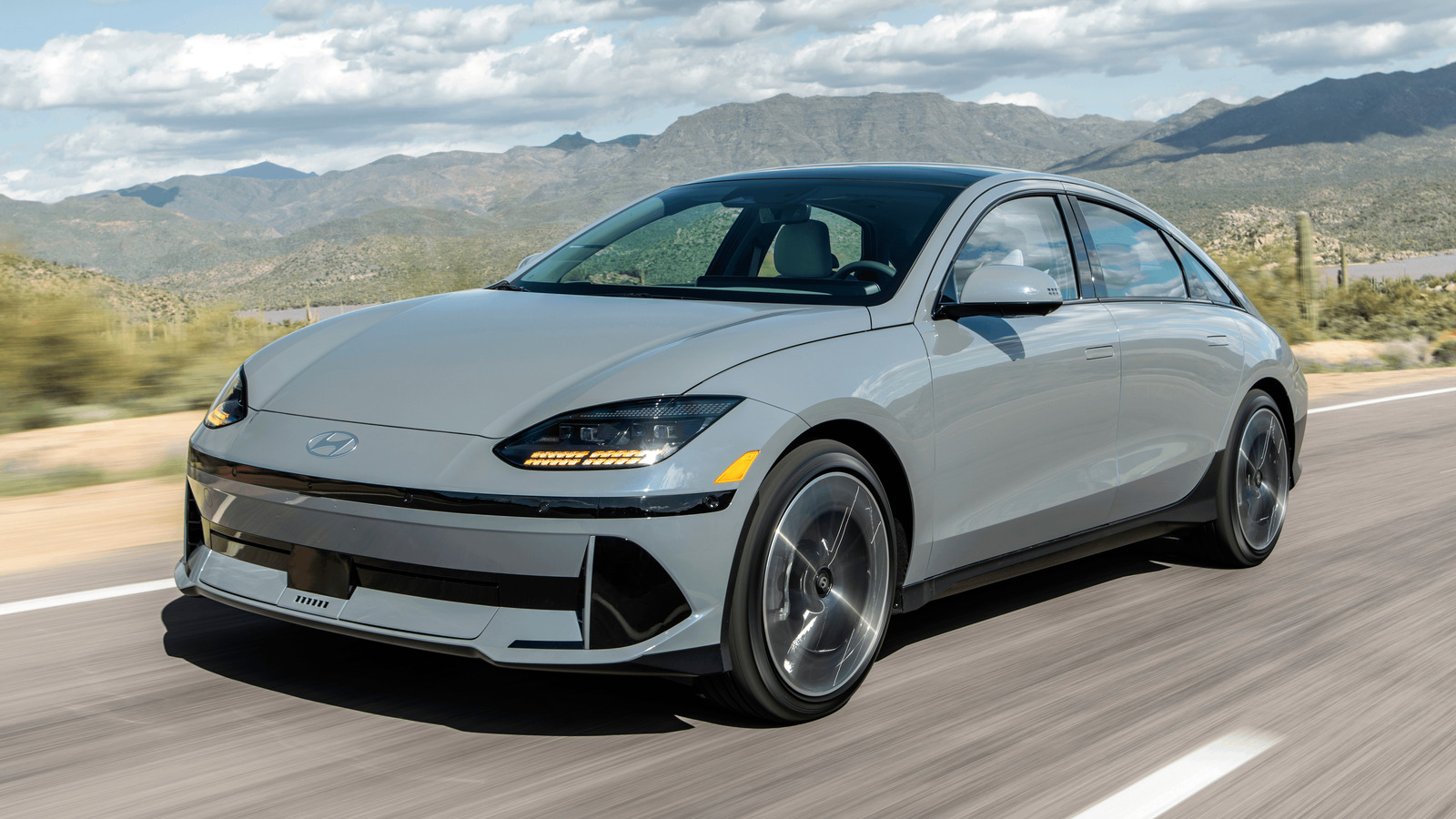

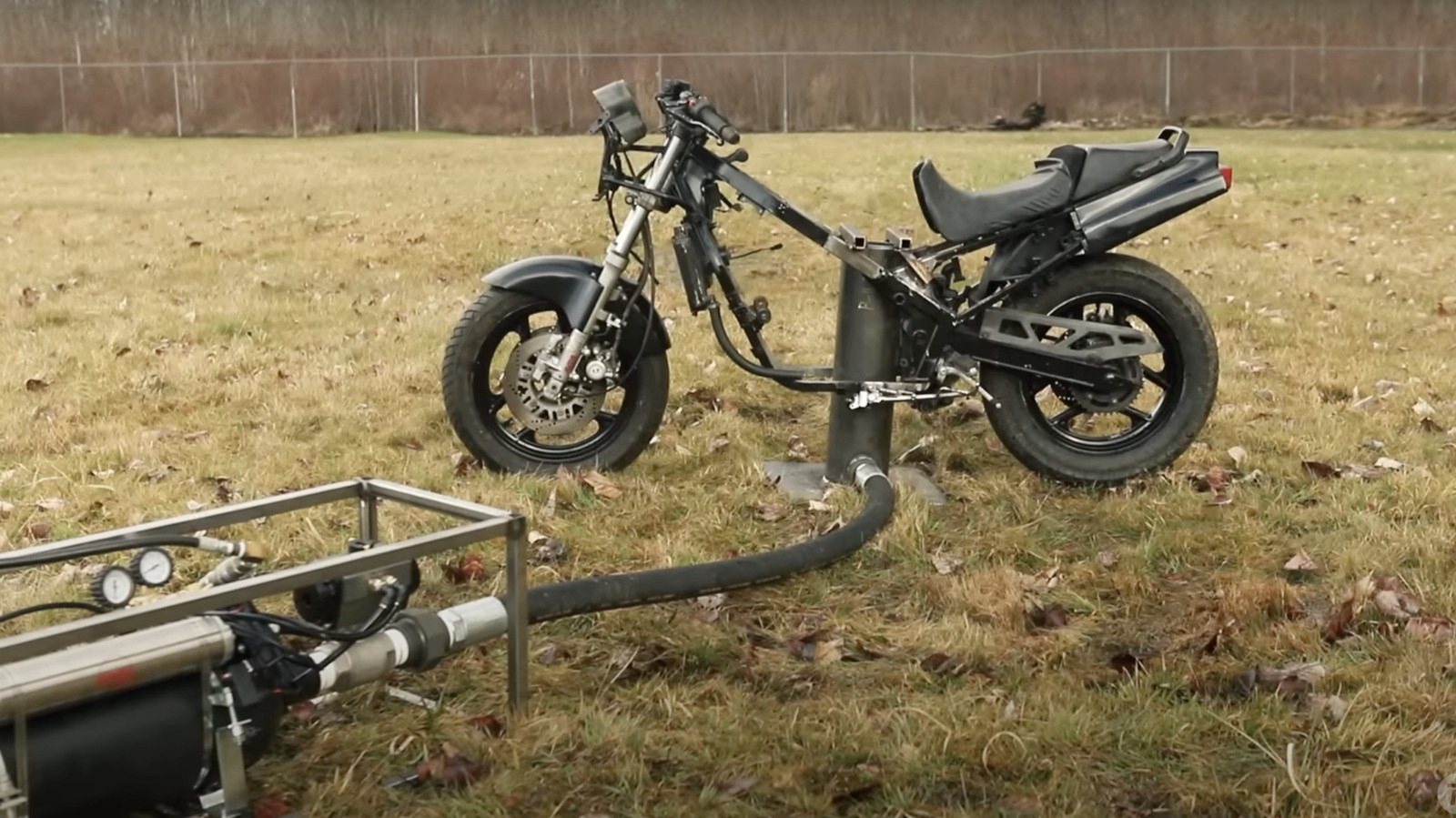







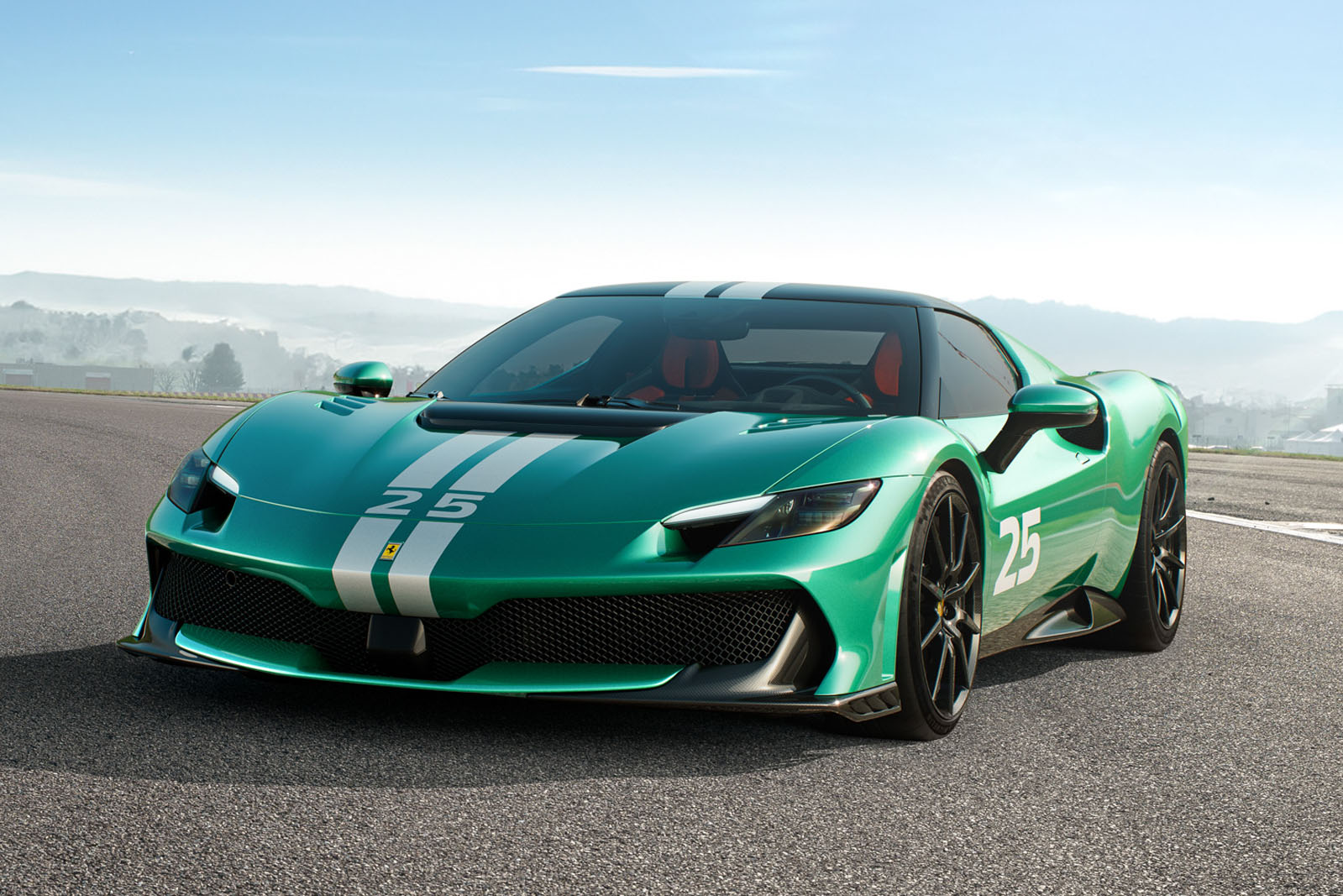
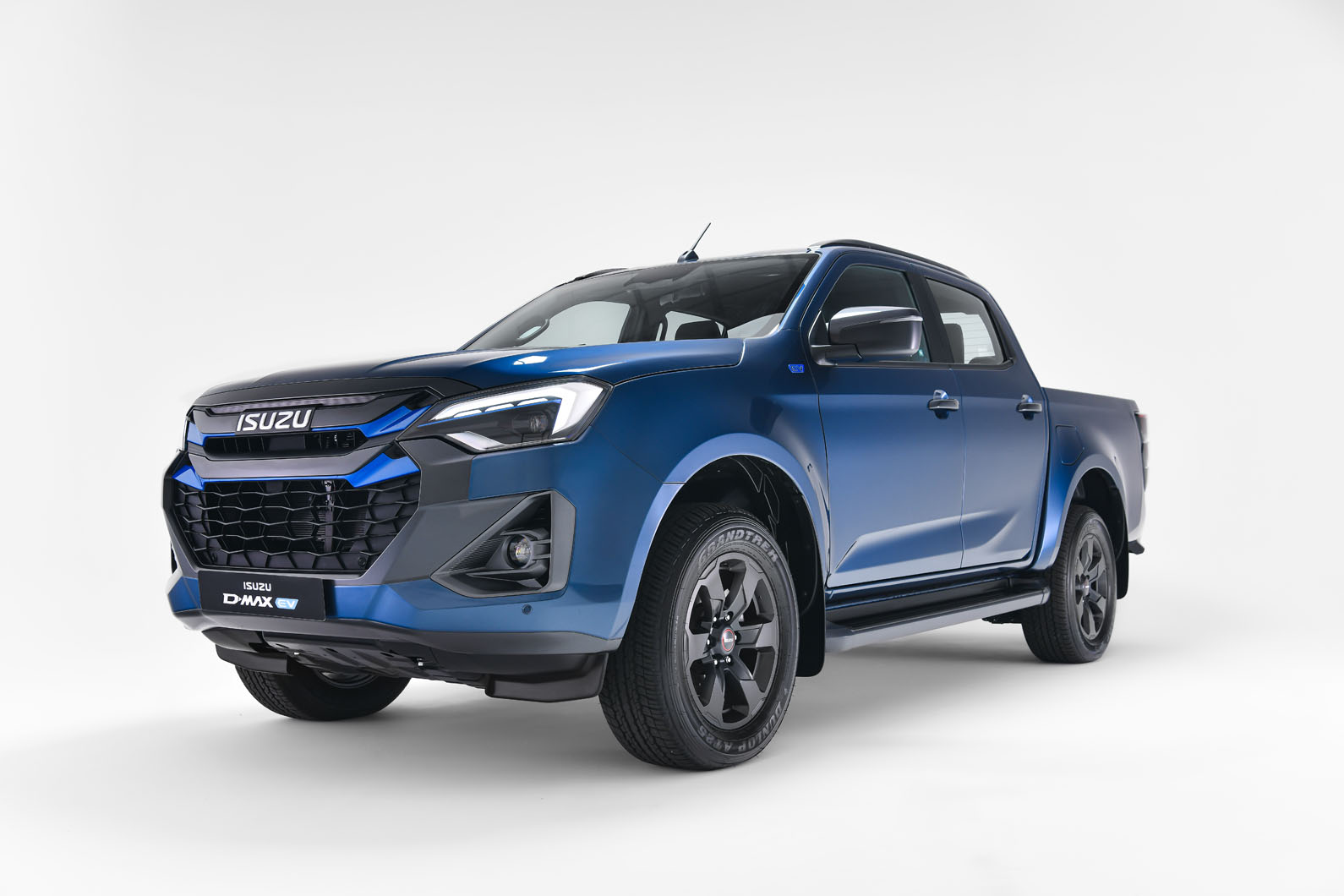










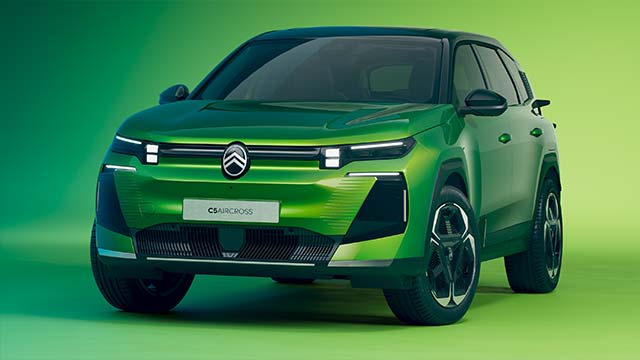

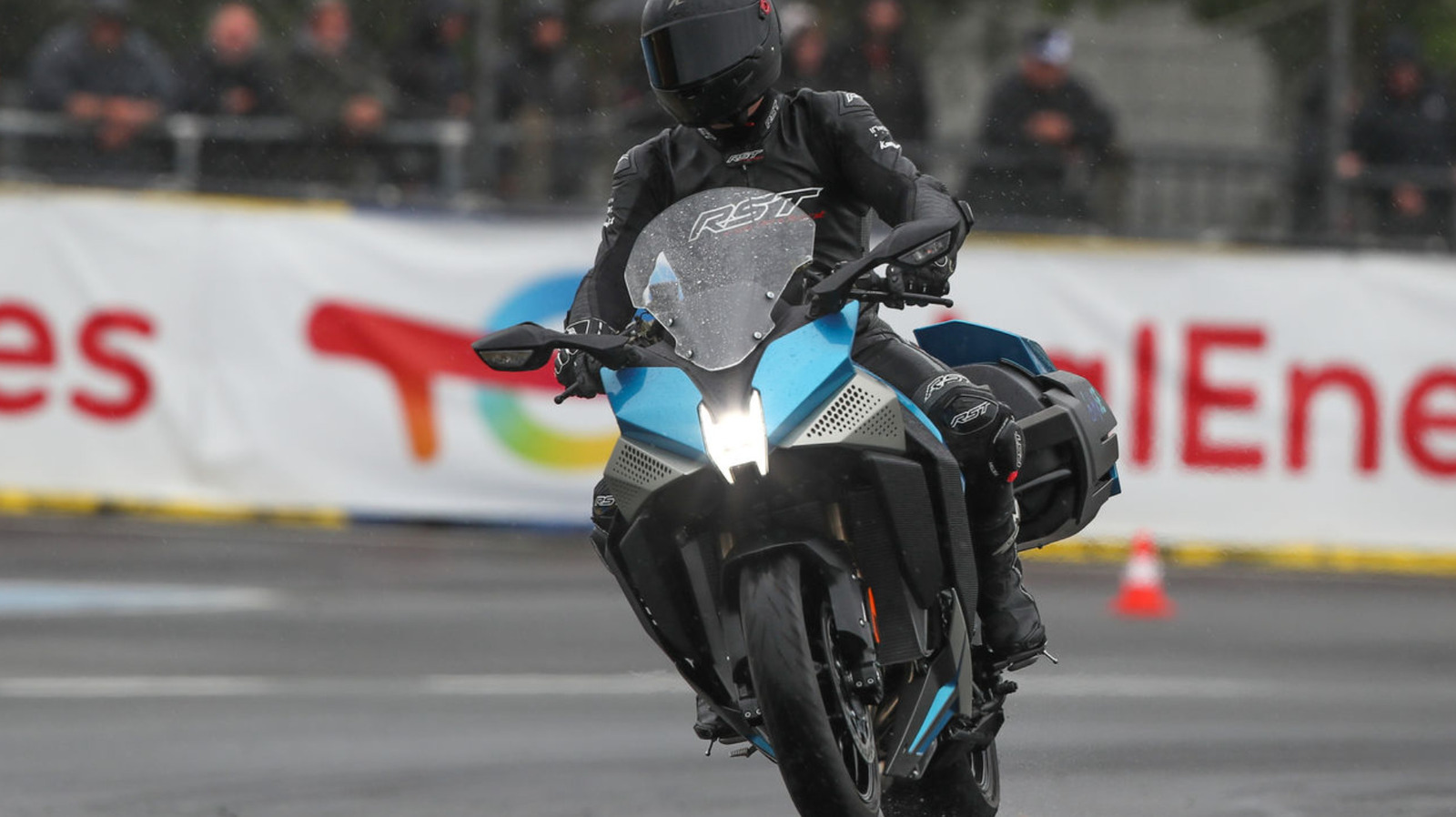





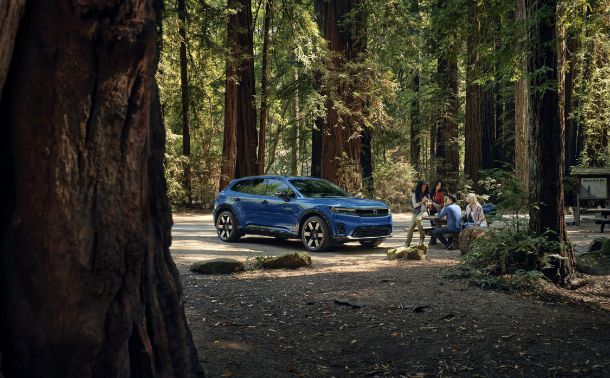





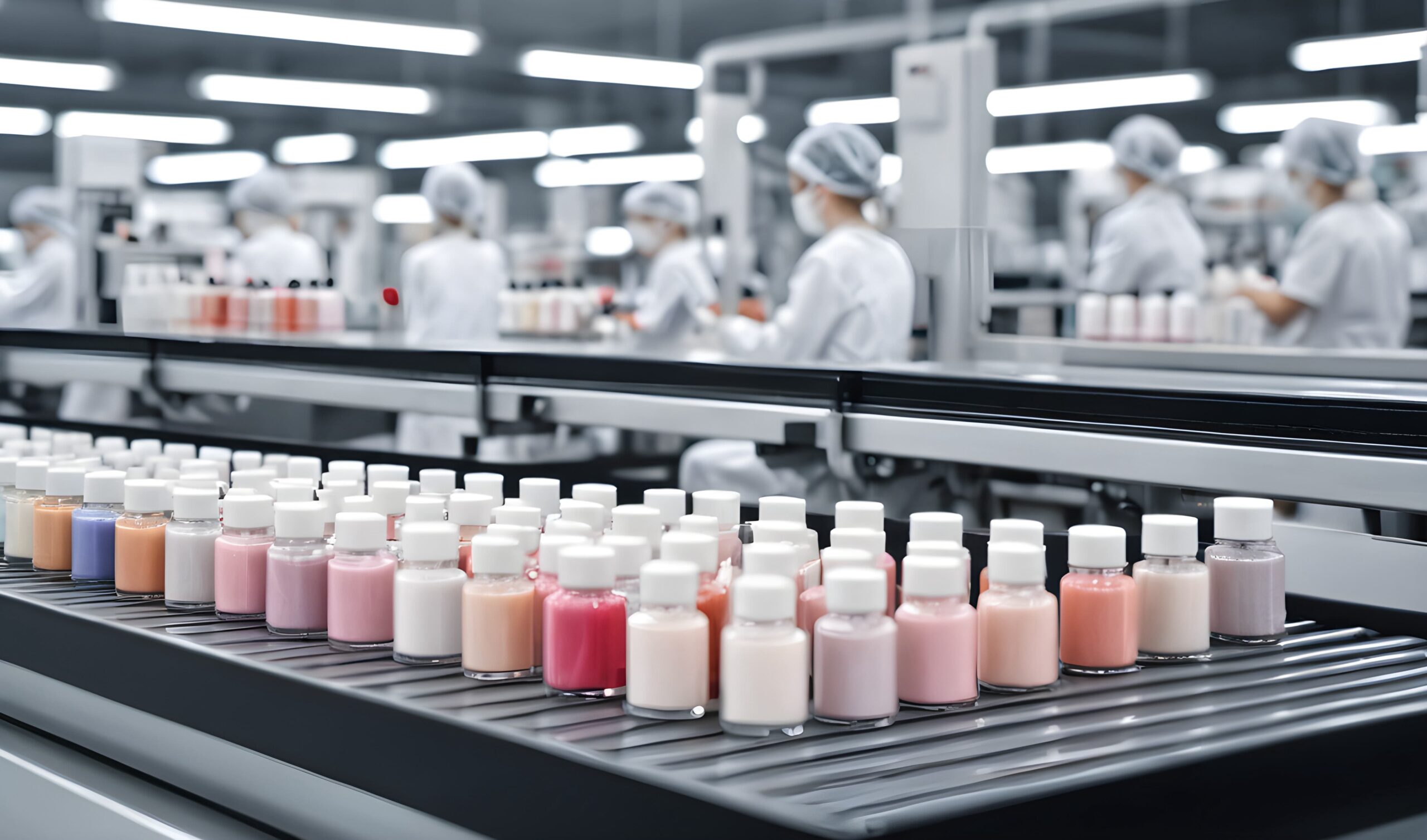
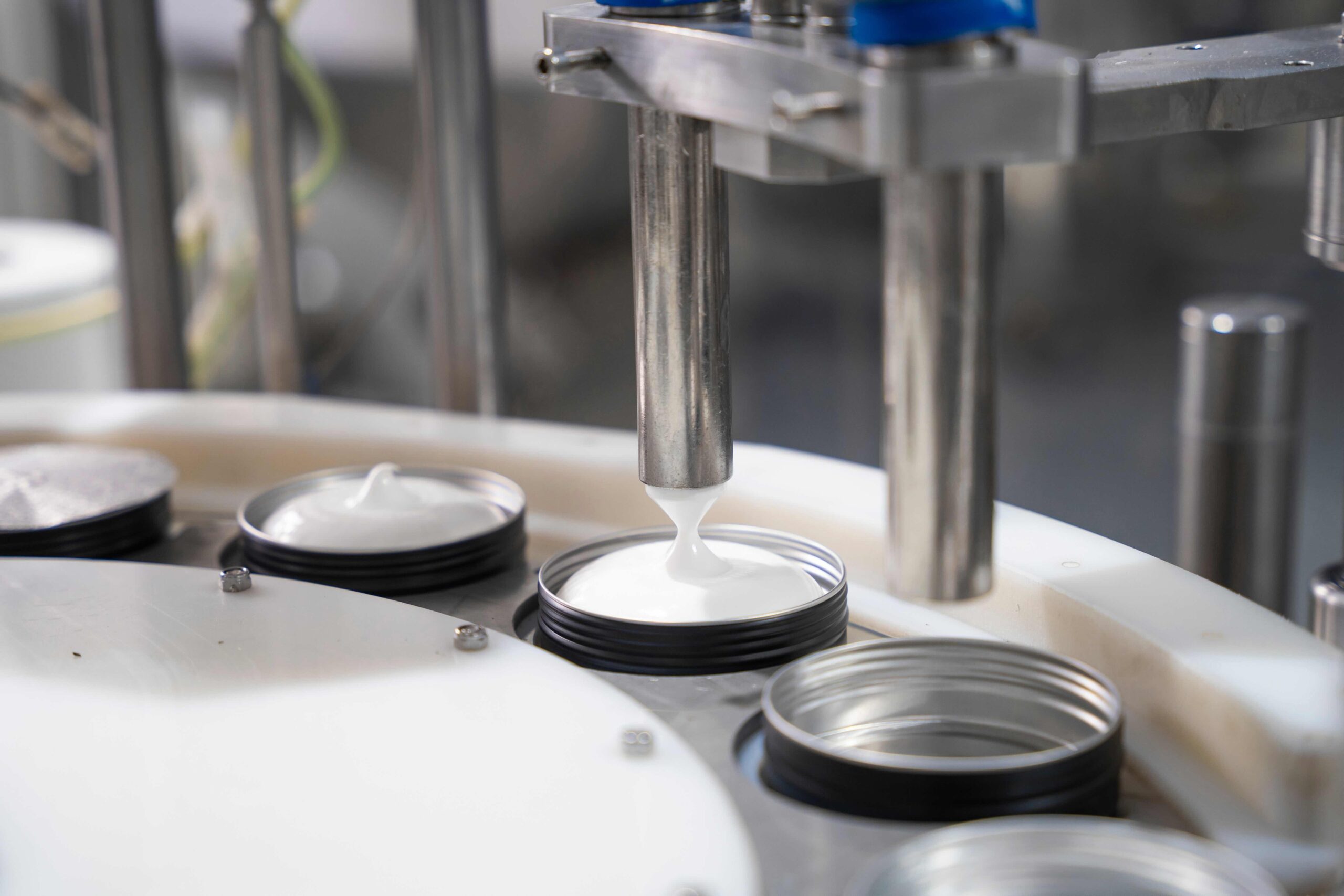
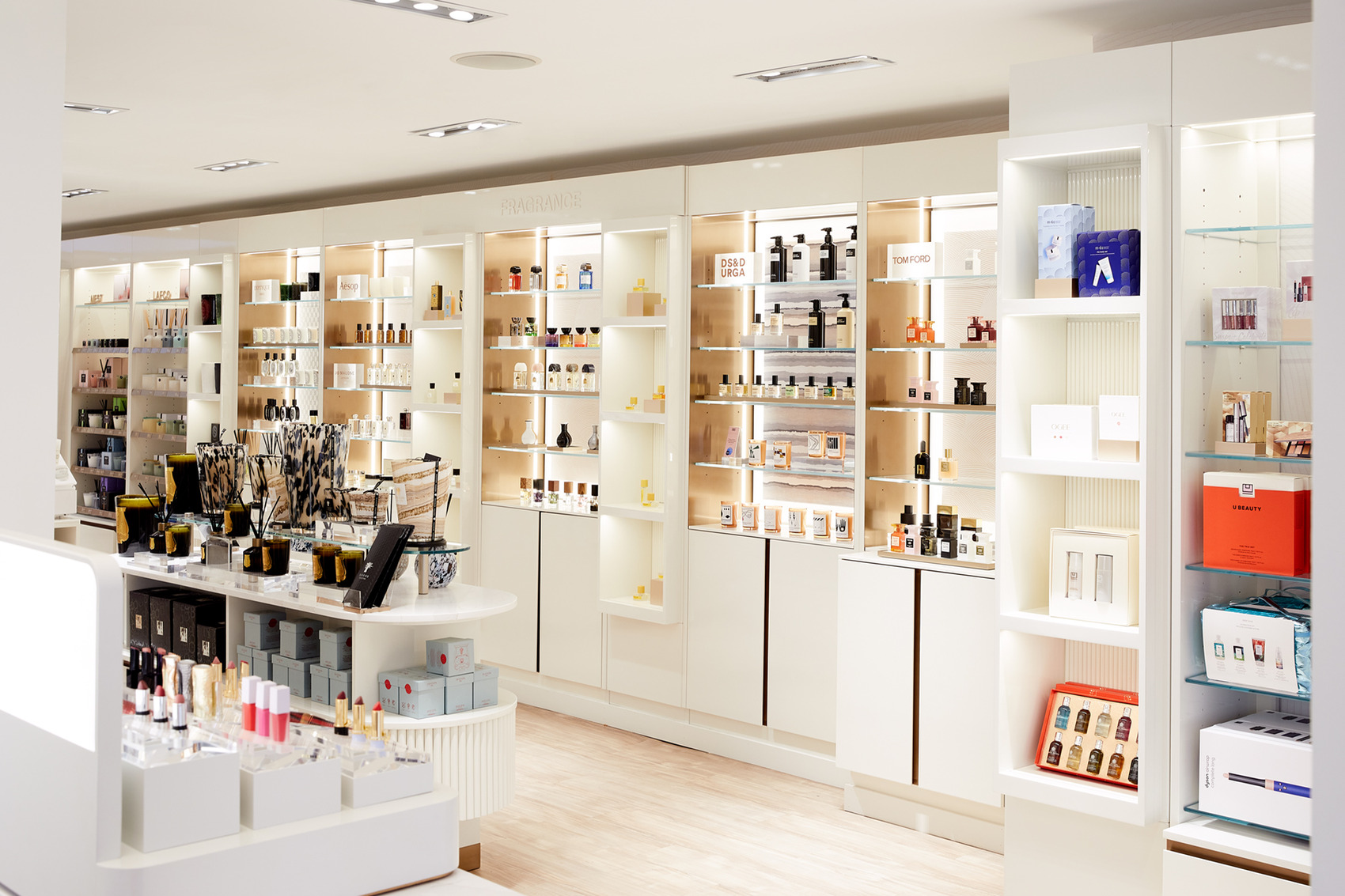
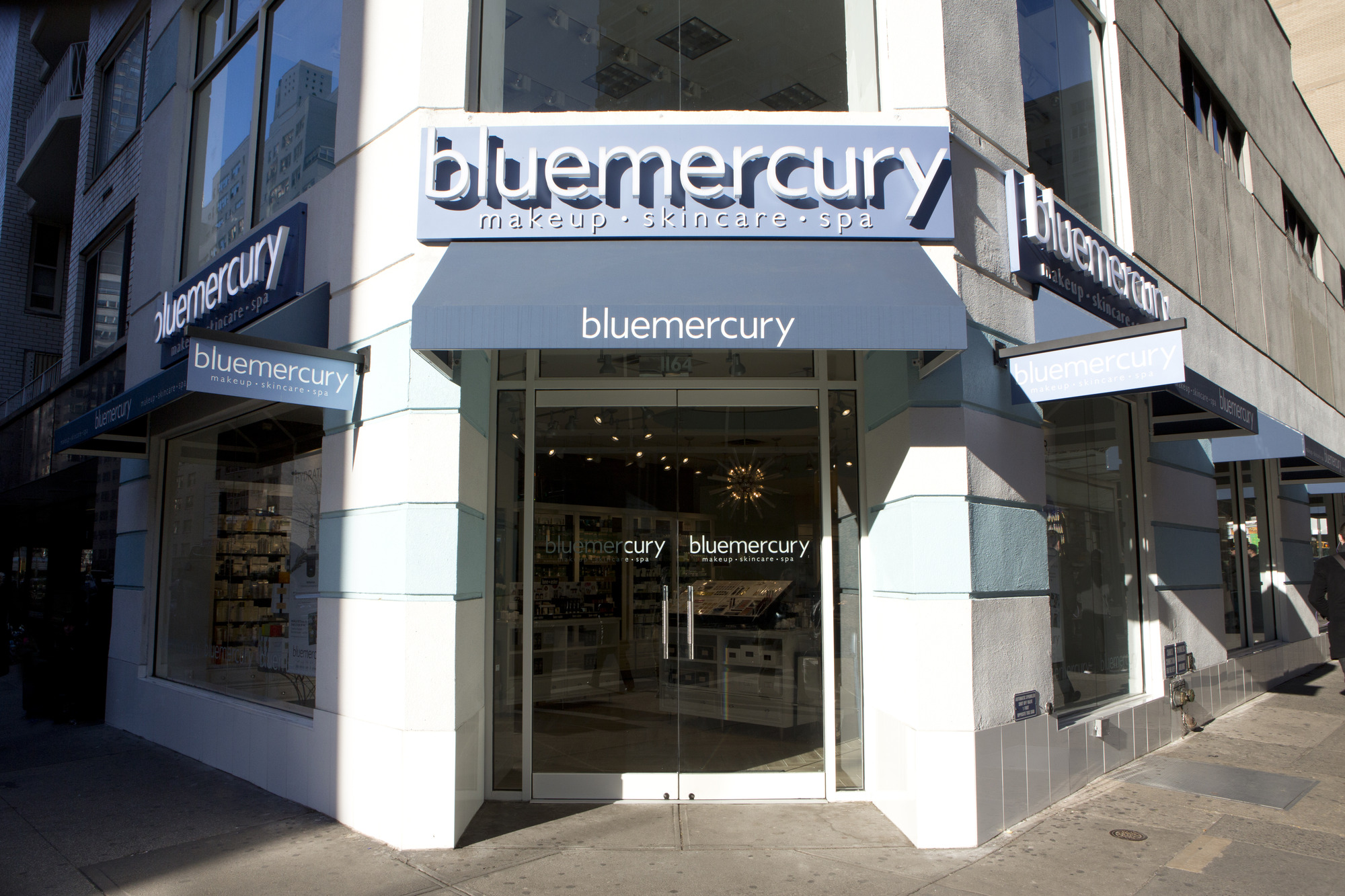

















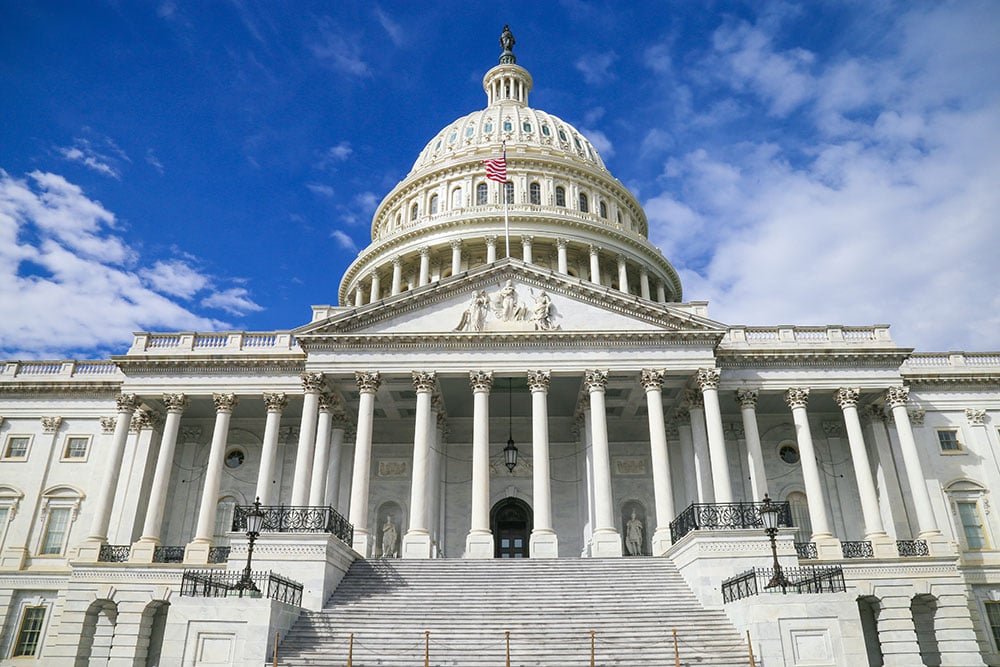




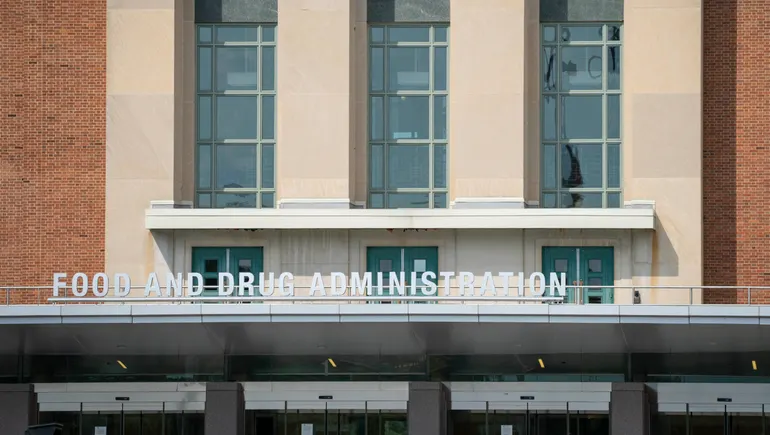
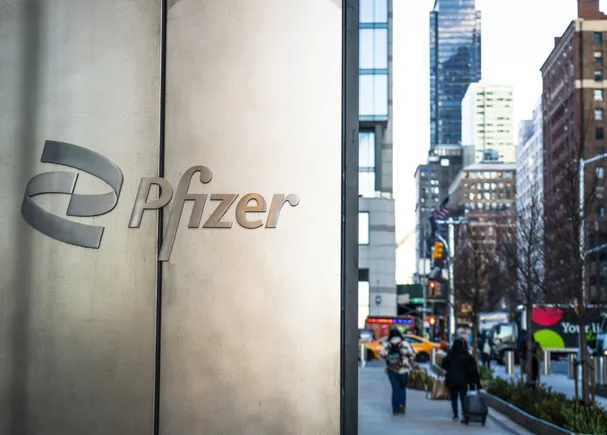
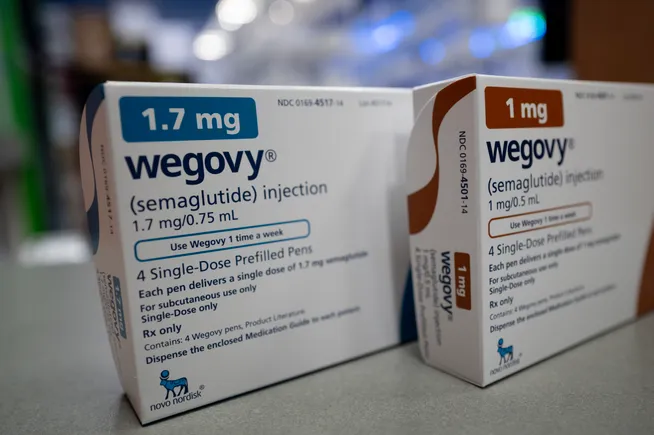
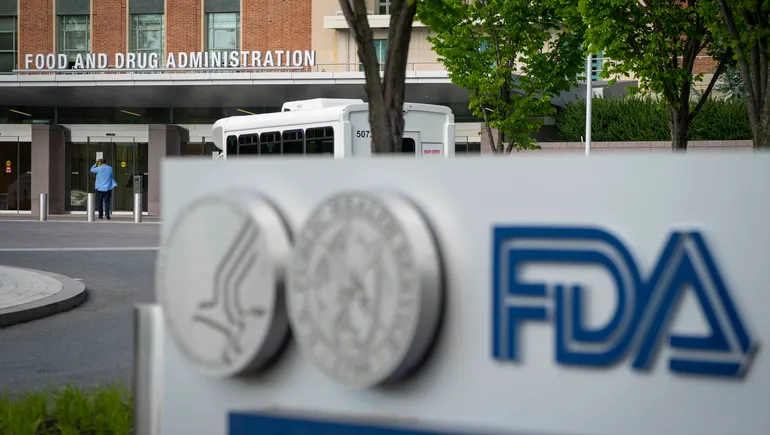










































![Why Did Tesla Stock [TSLA] Rise Again?](https://cleantechnica.com/wp-content/uploads/2025/04/Screenshot-2025-04-10-at-3.31.36 AM.png)










